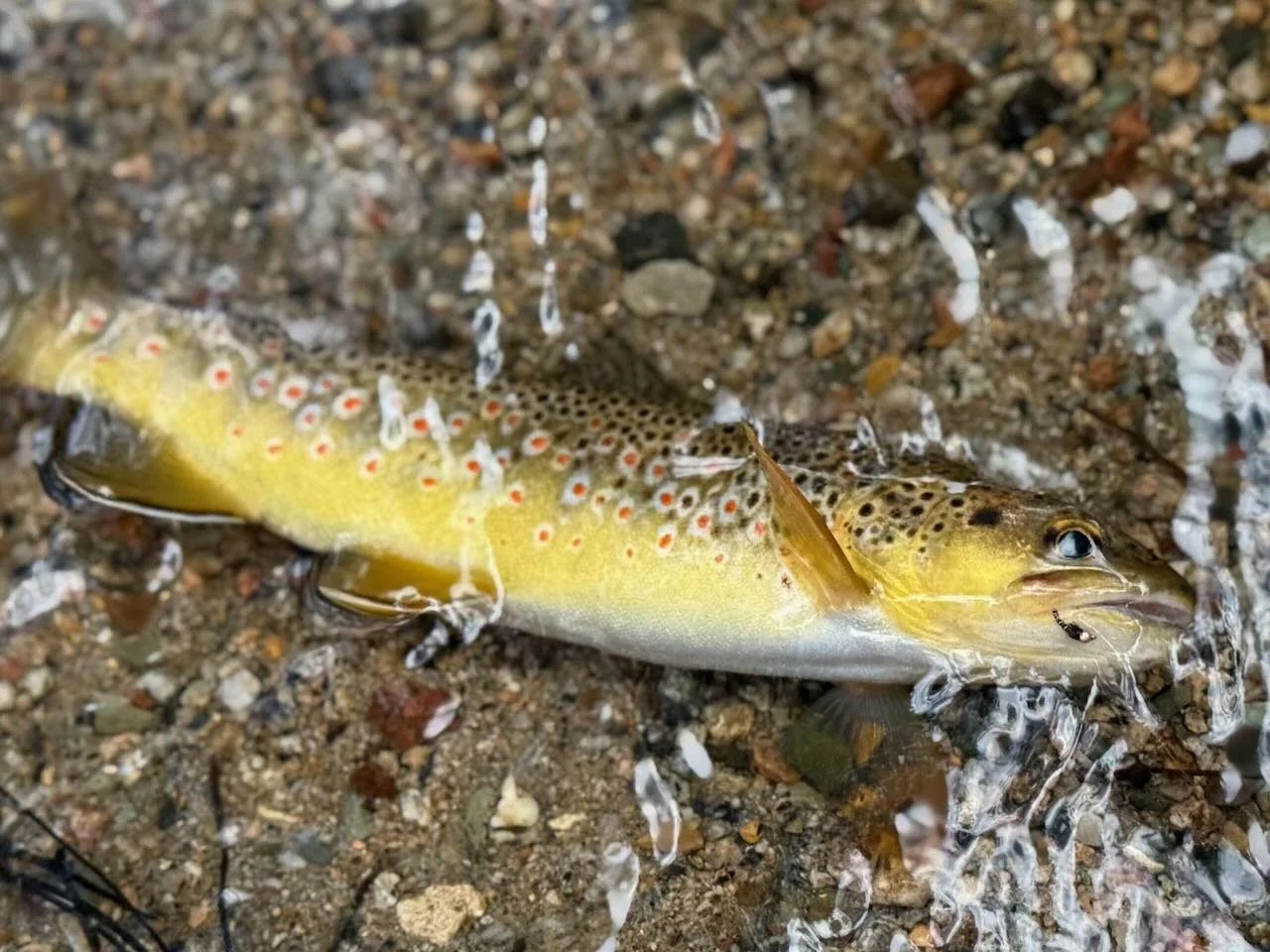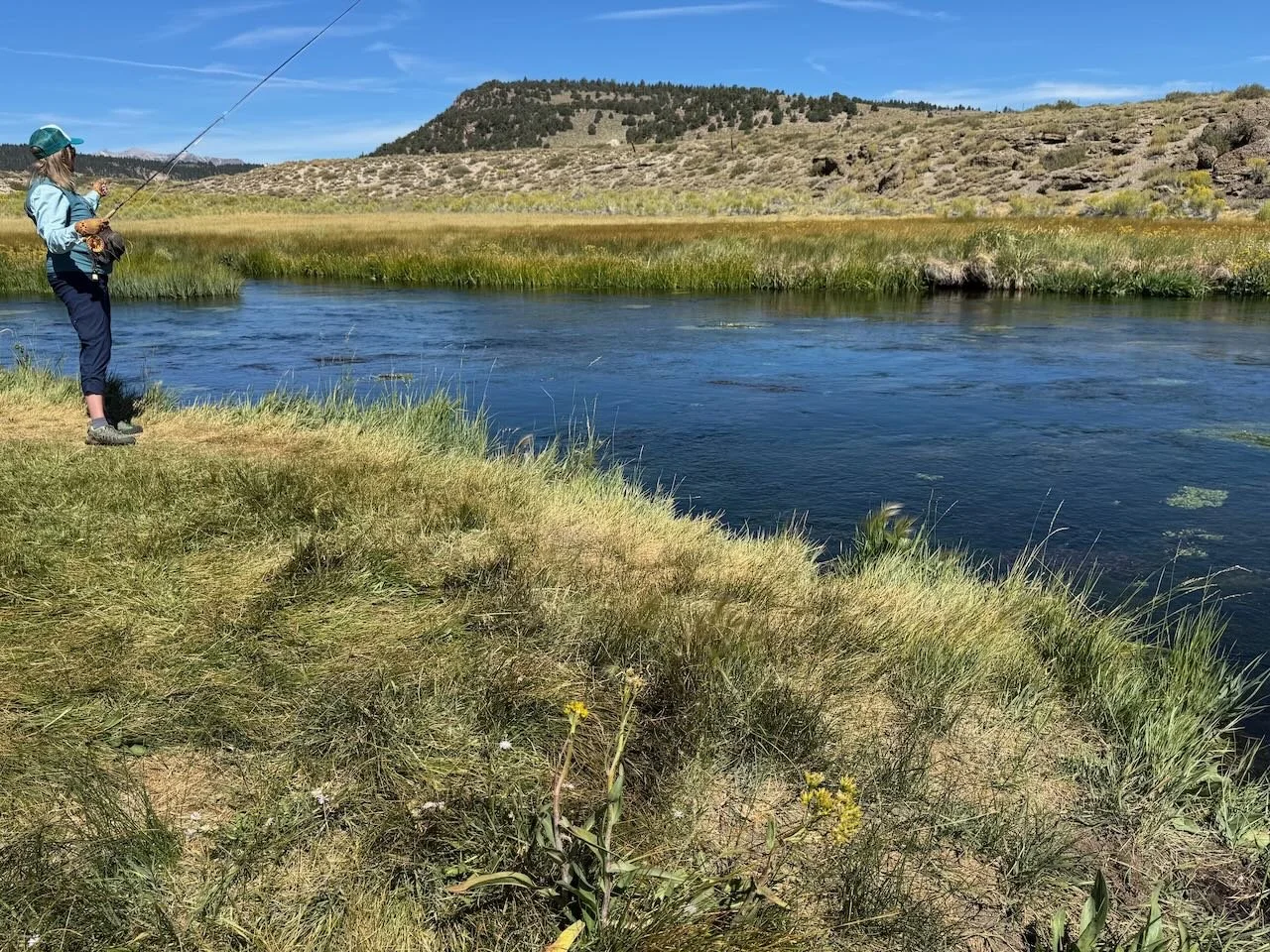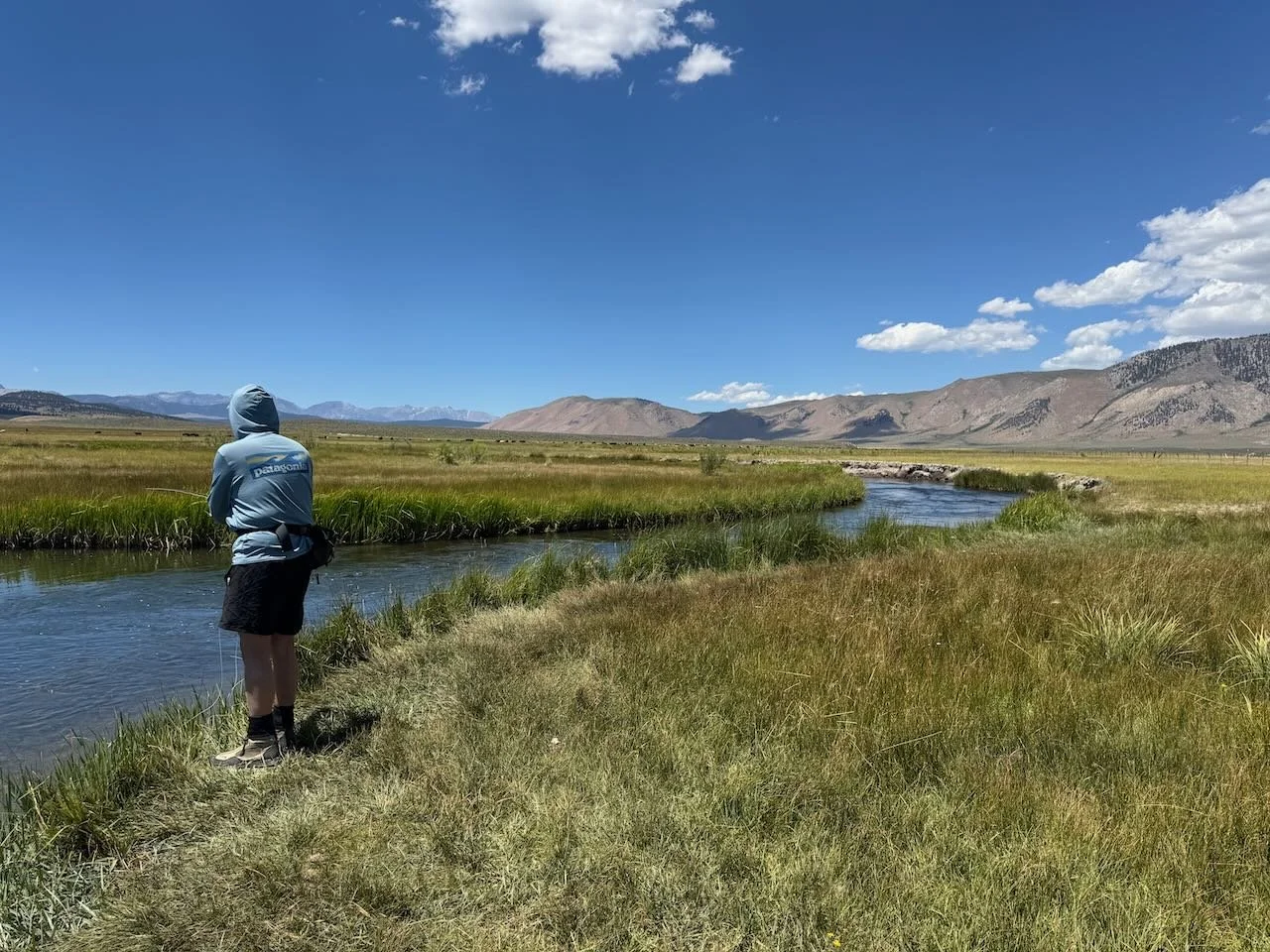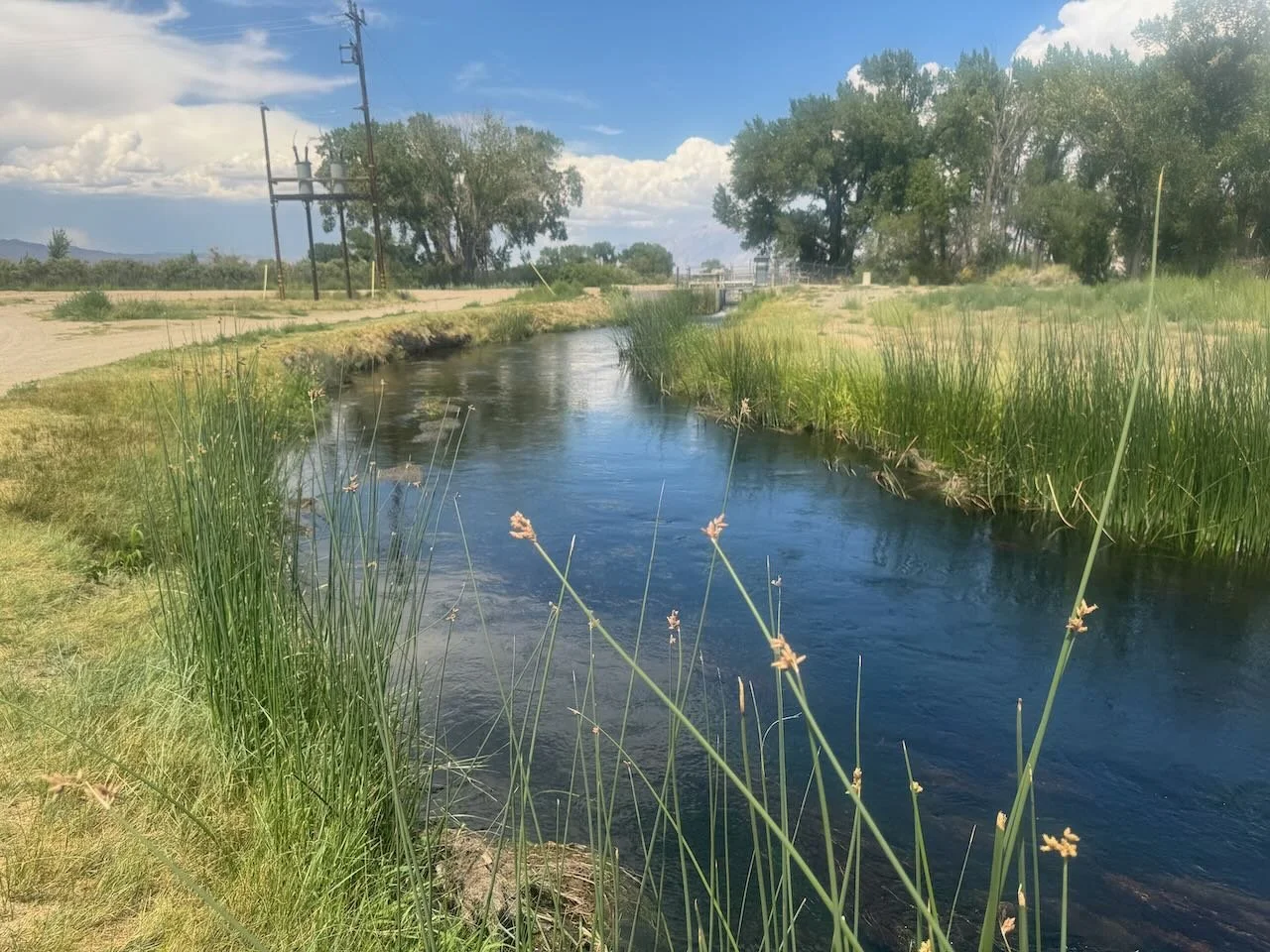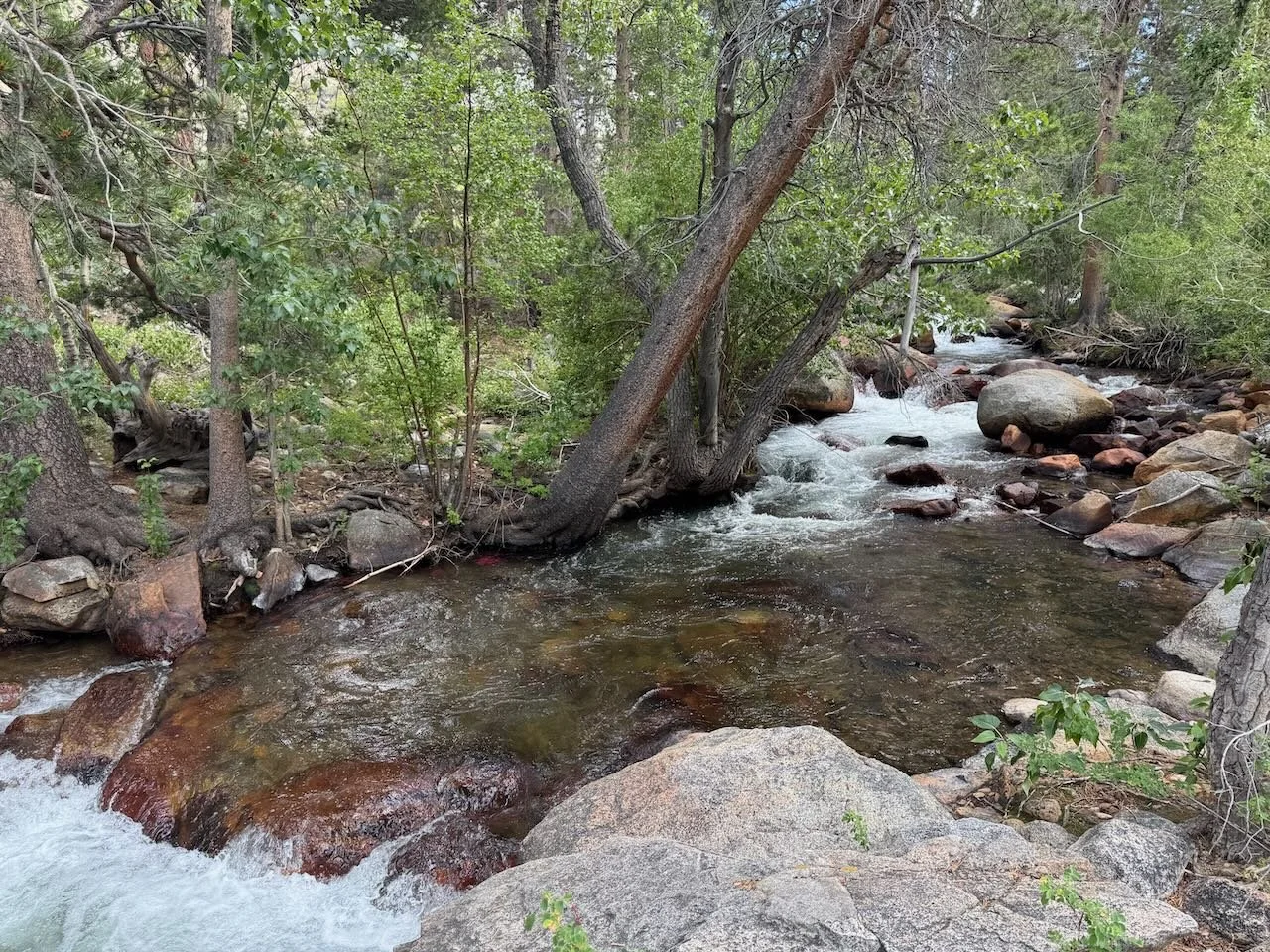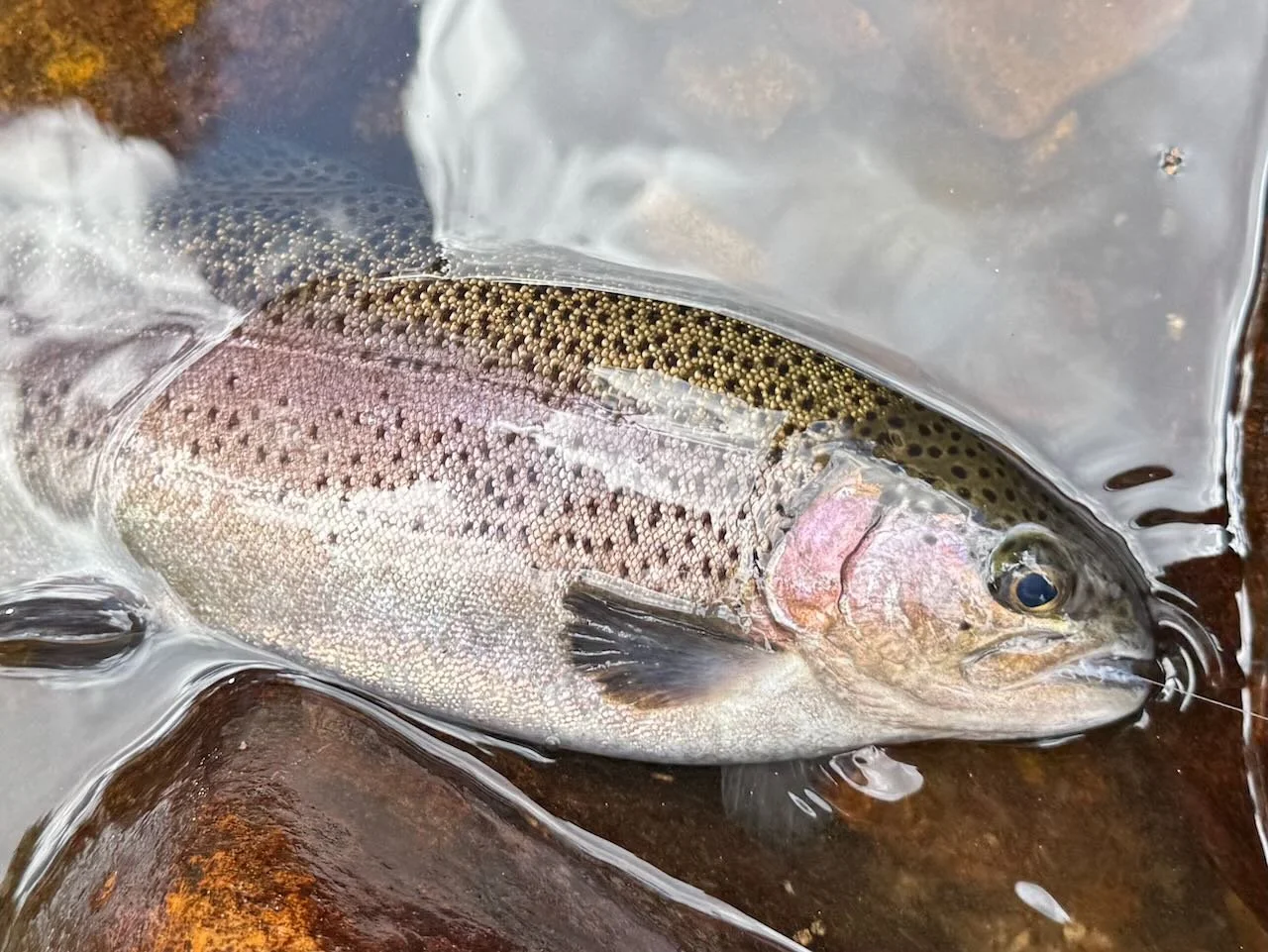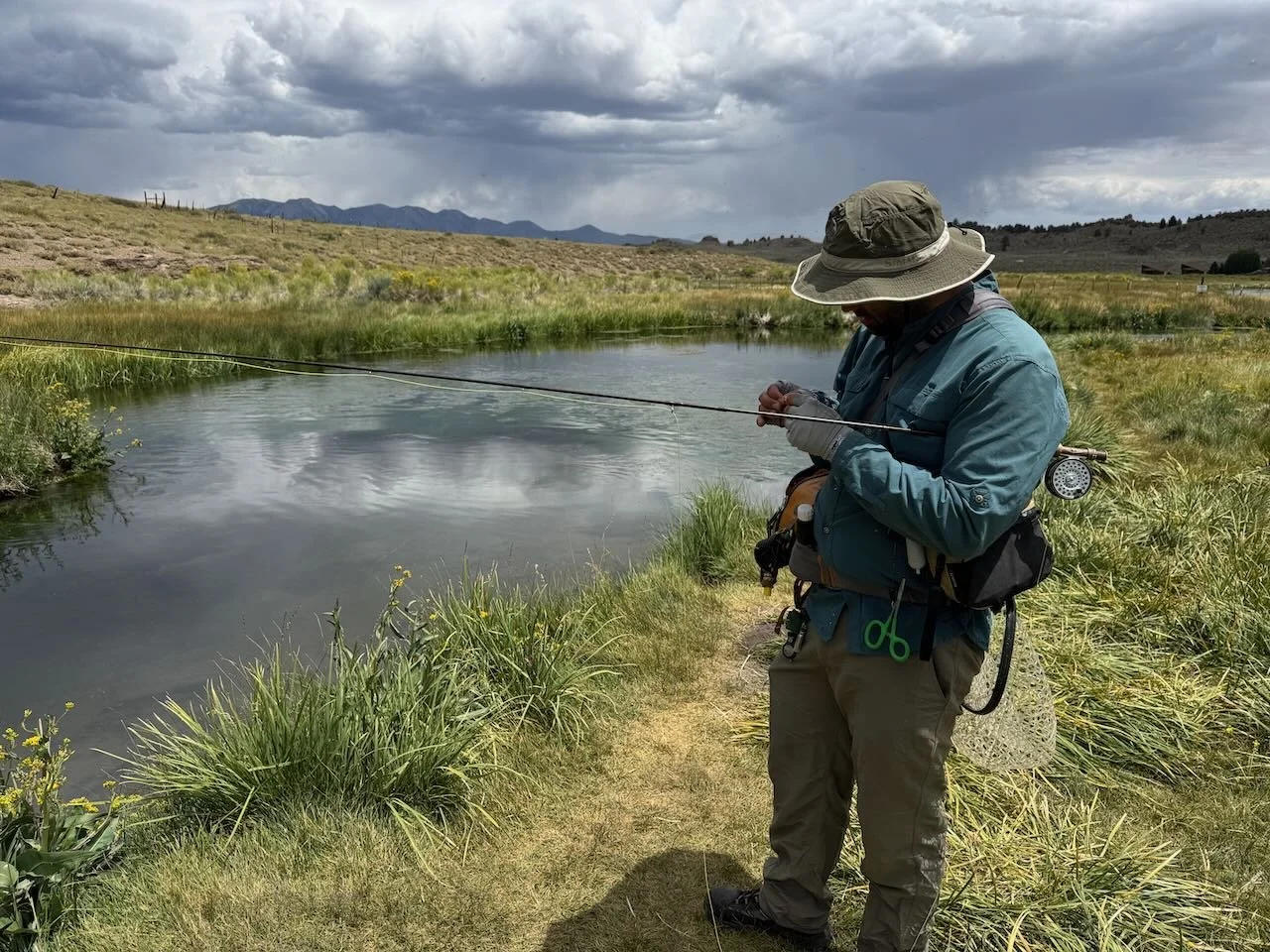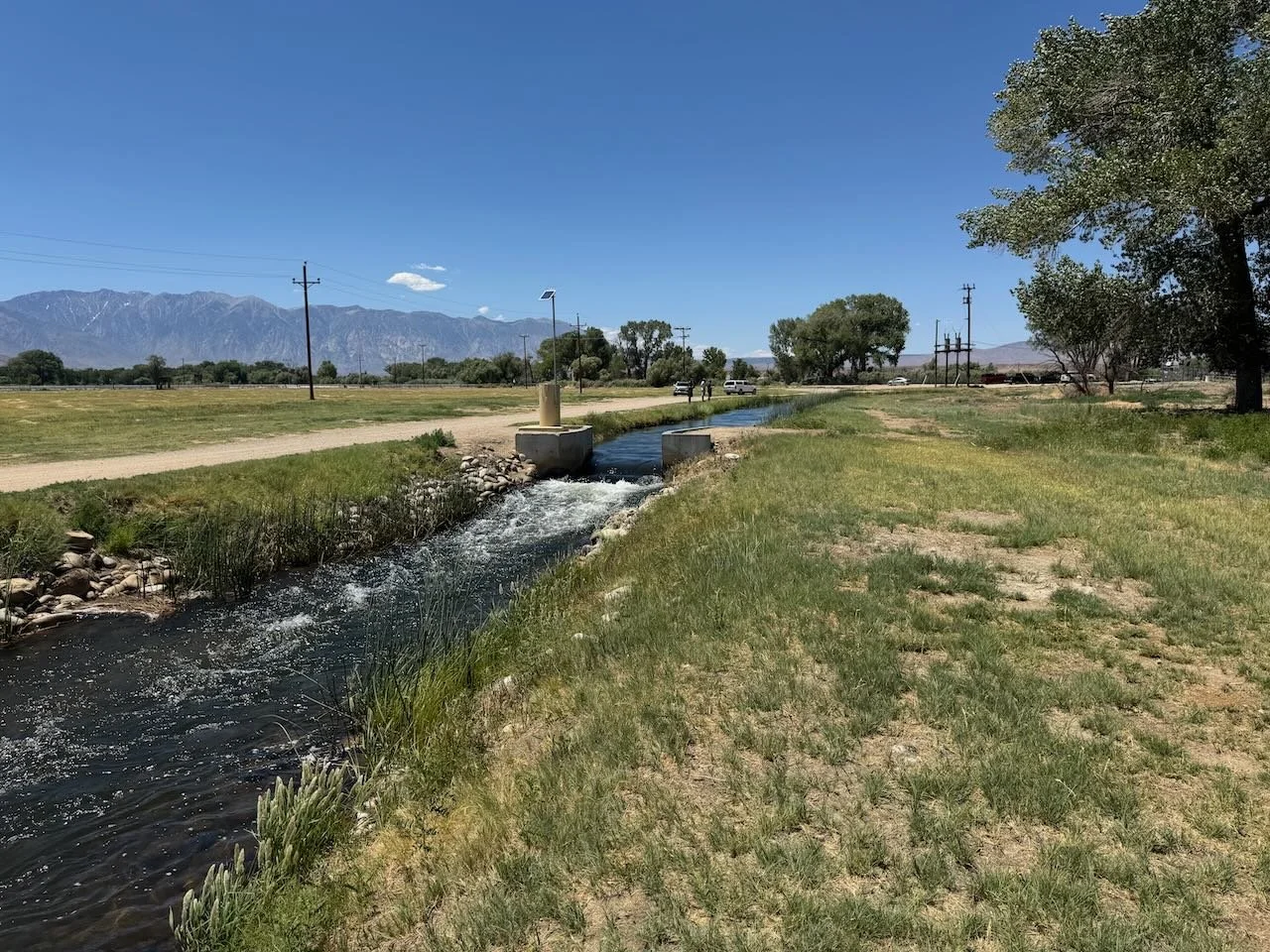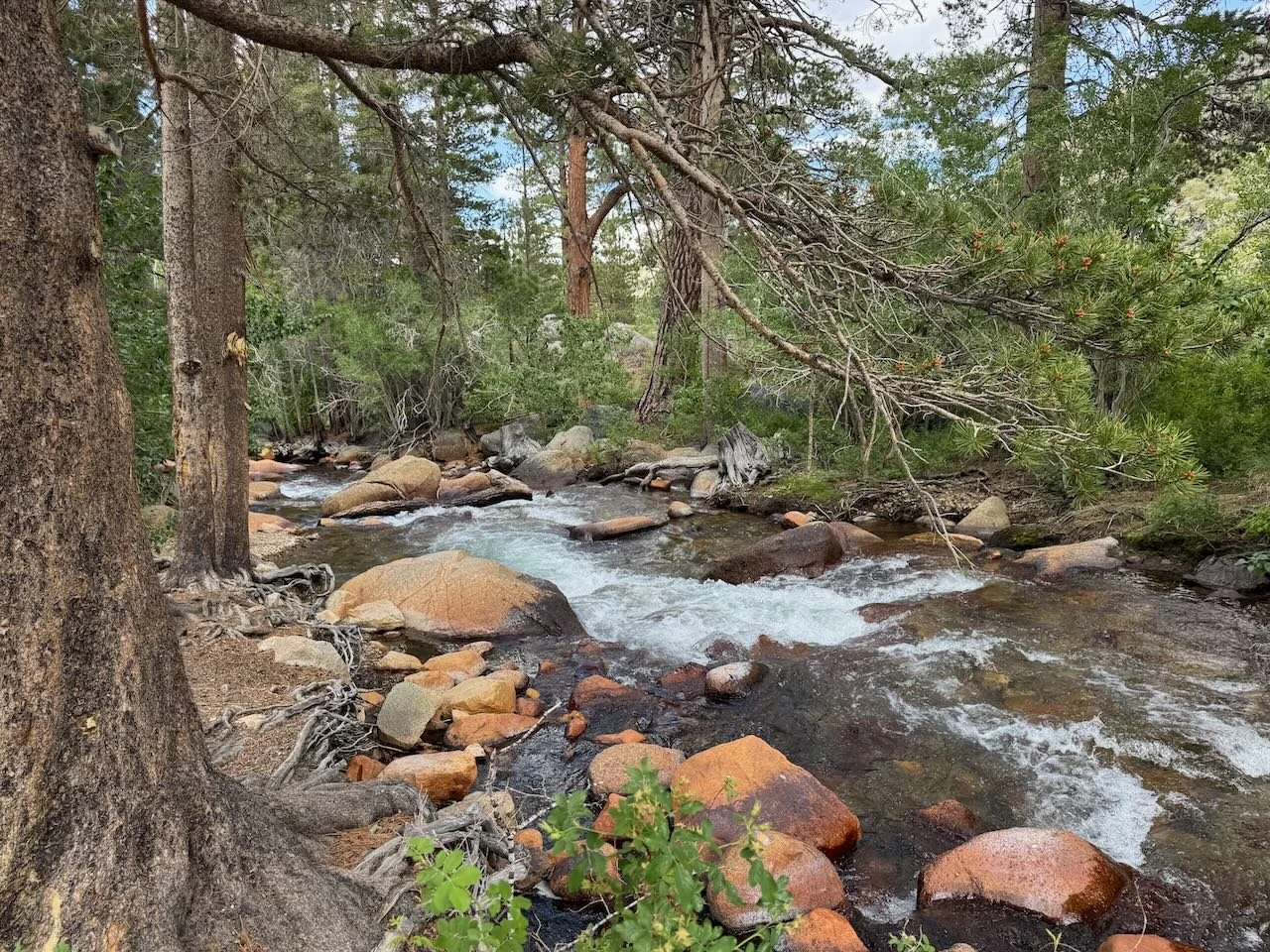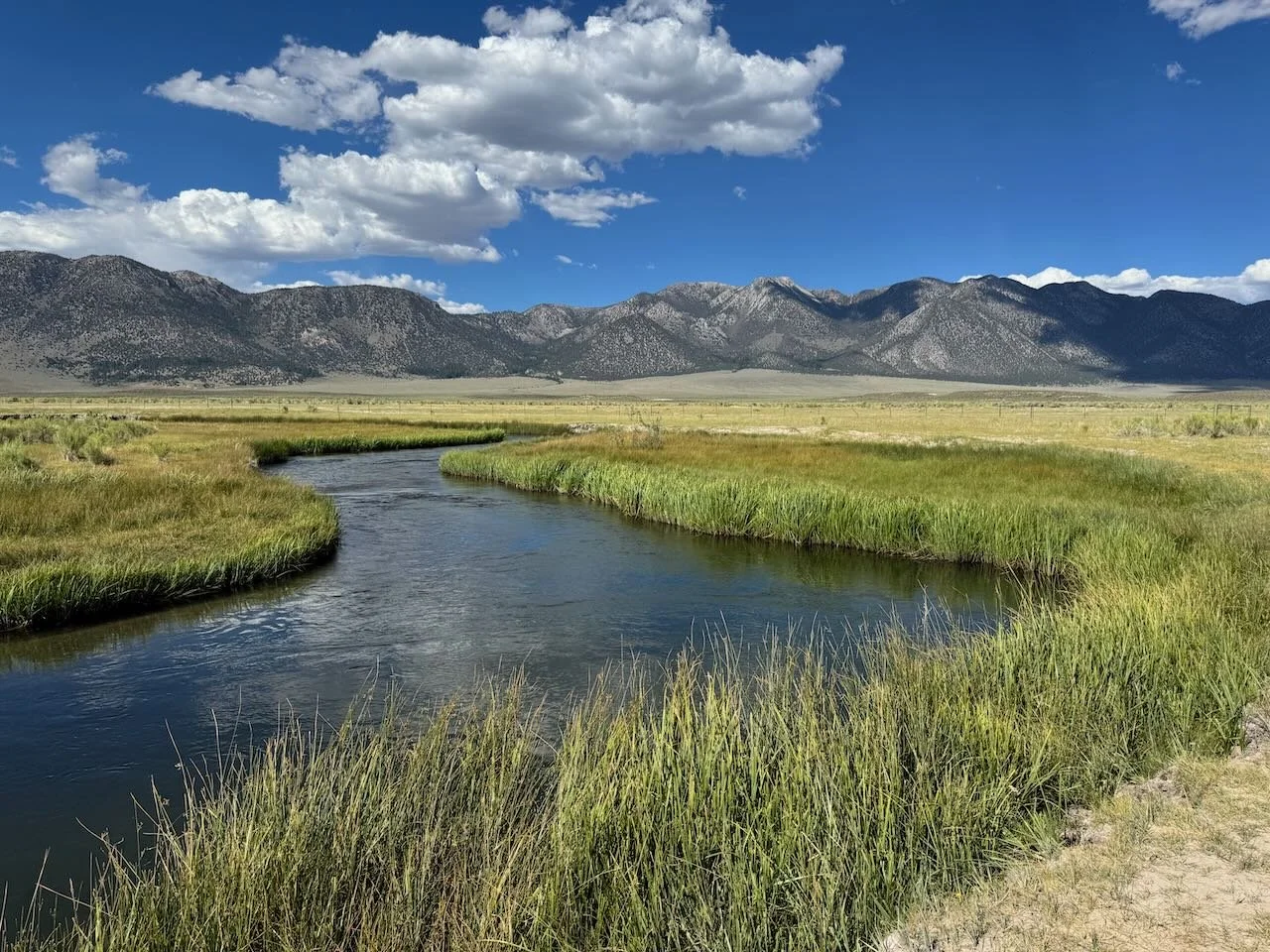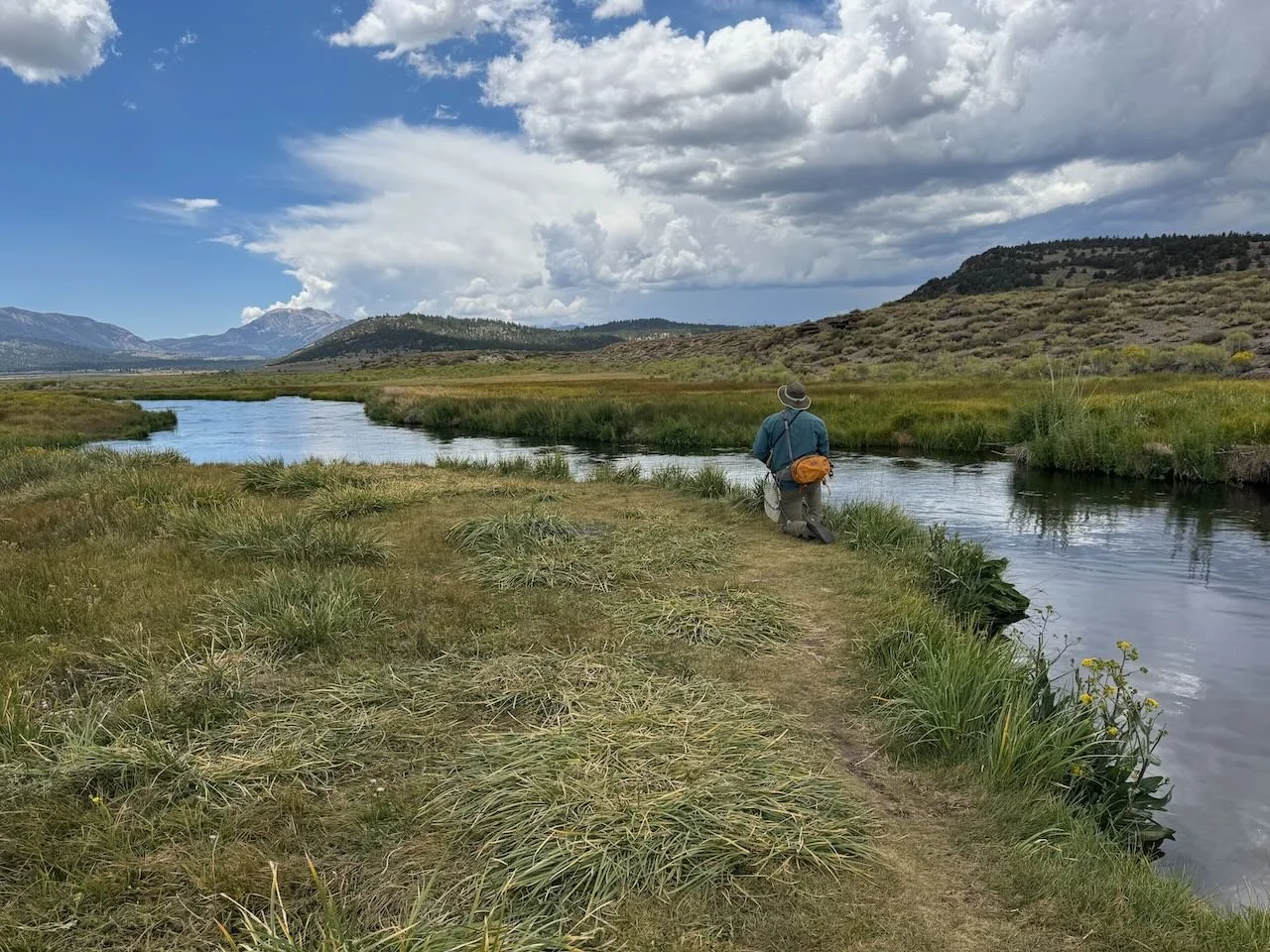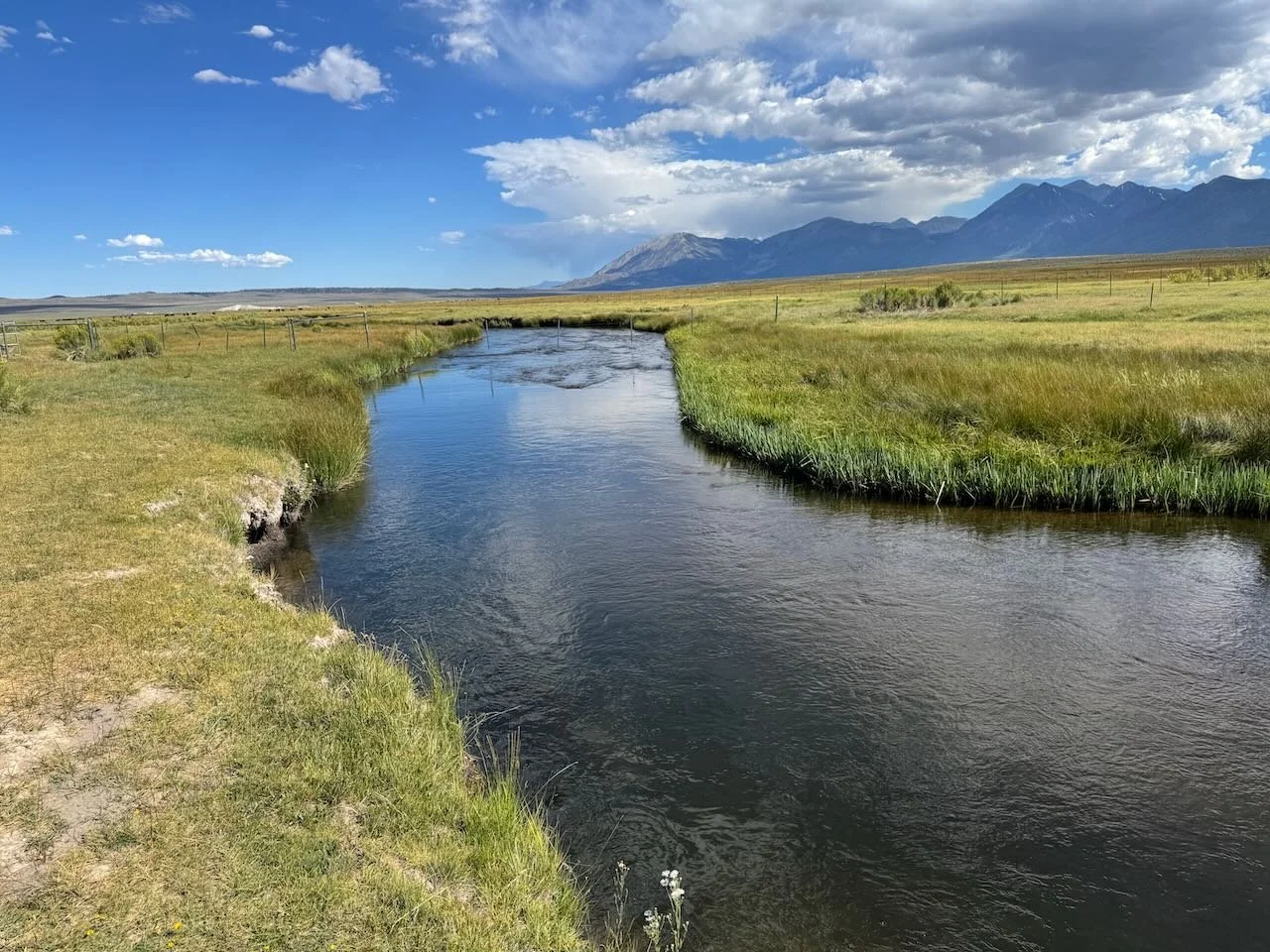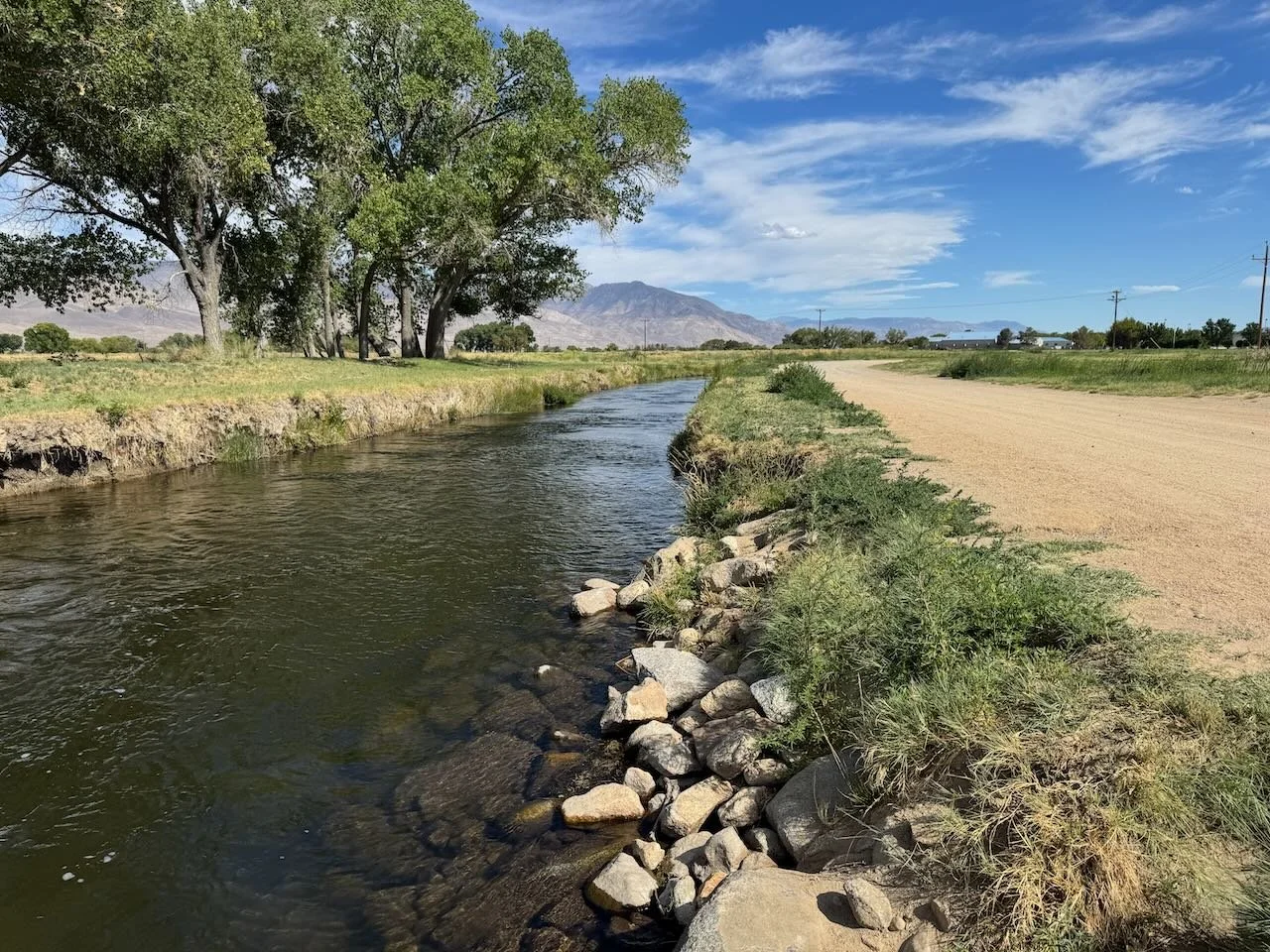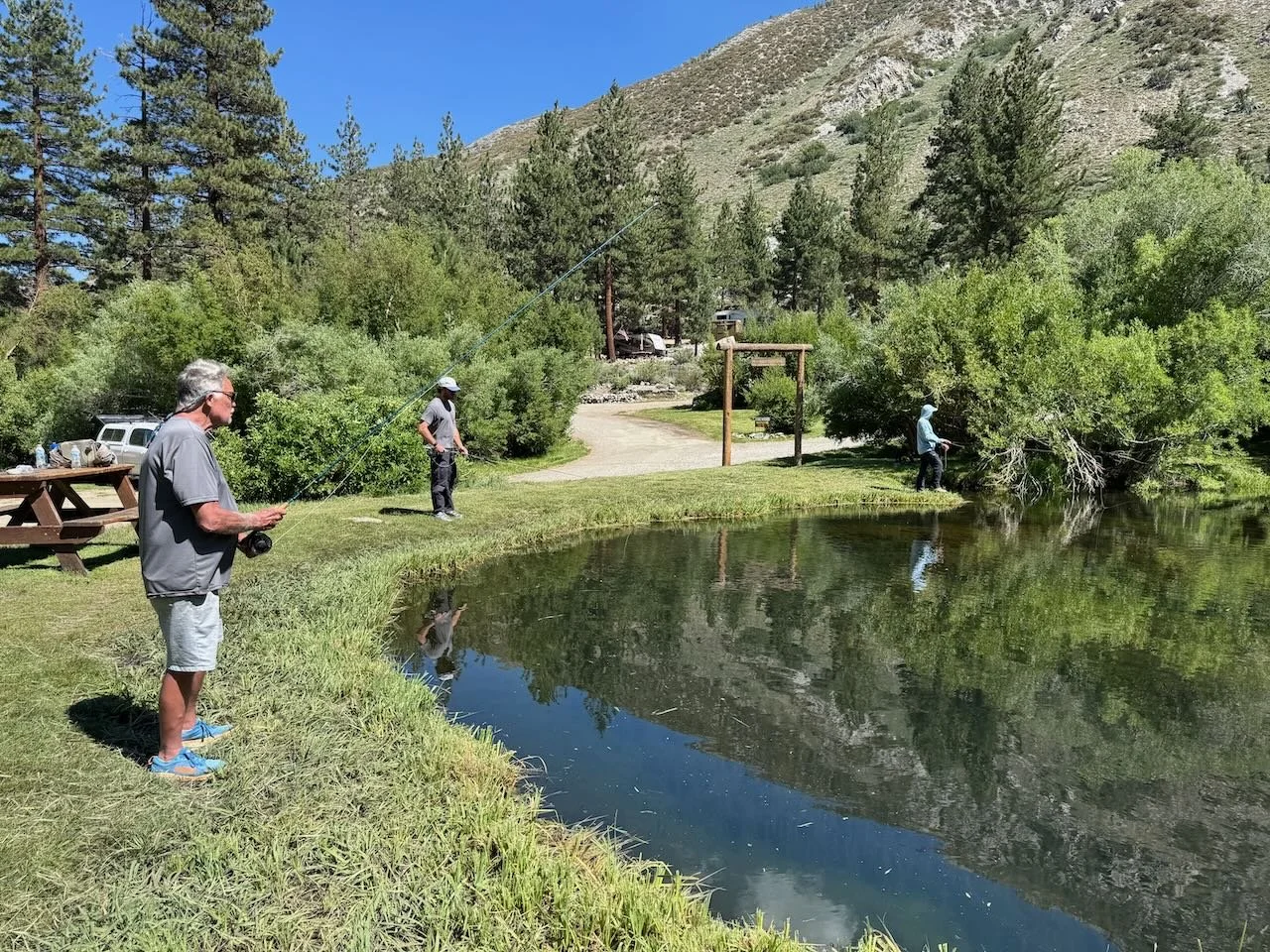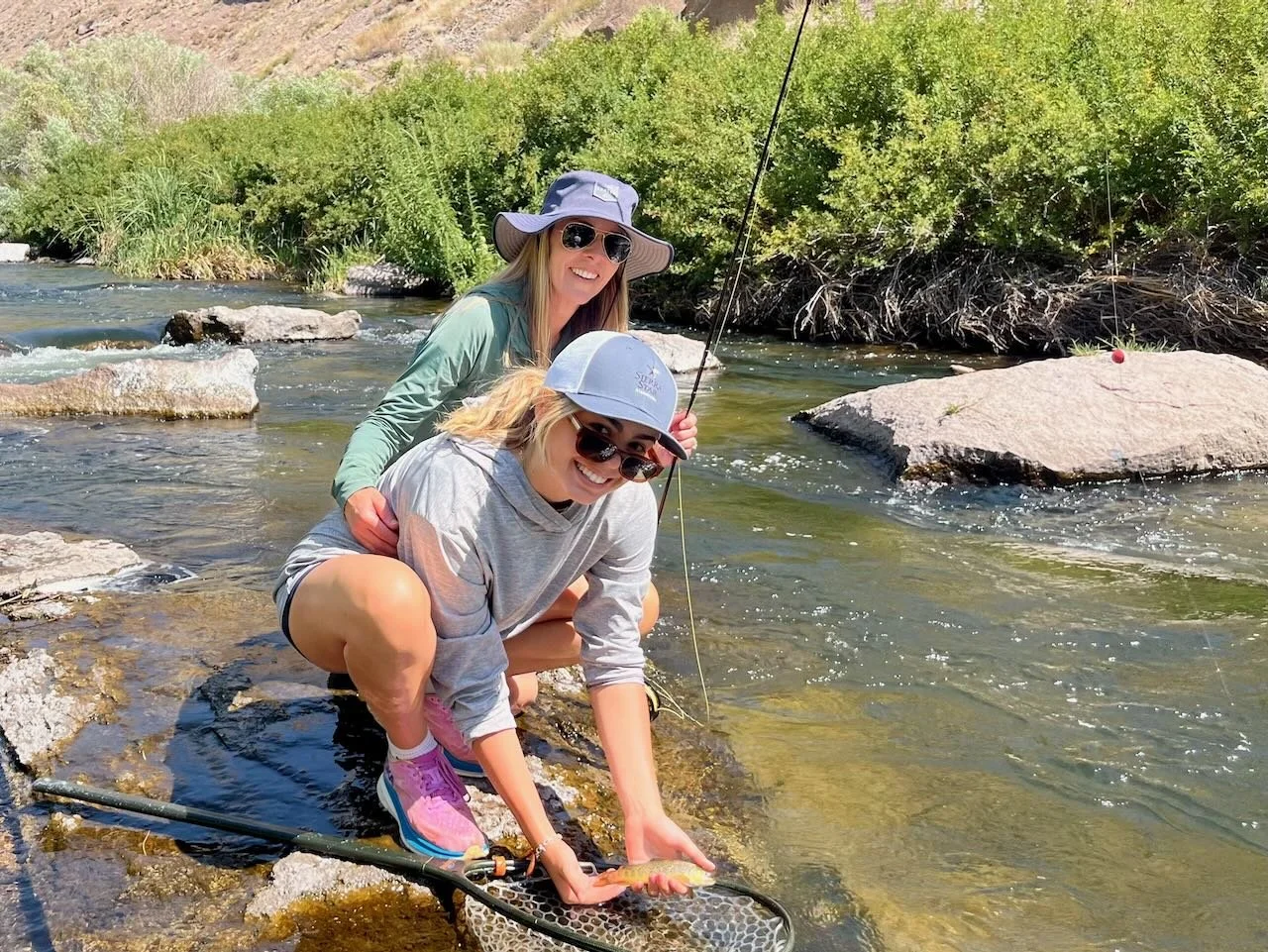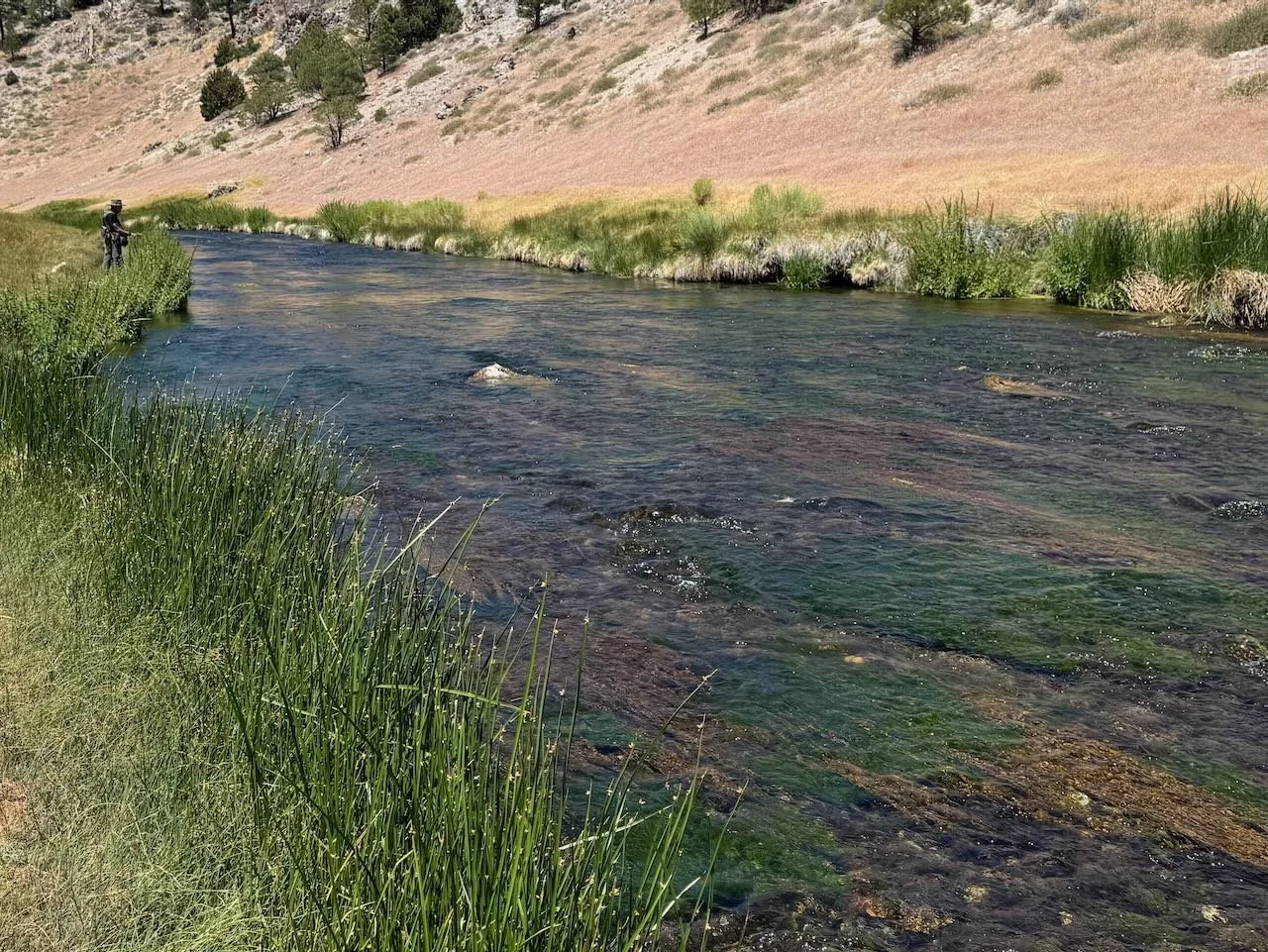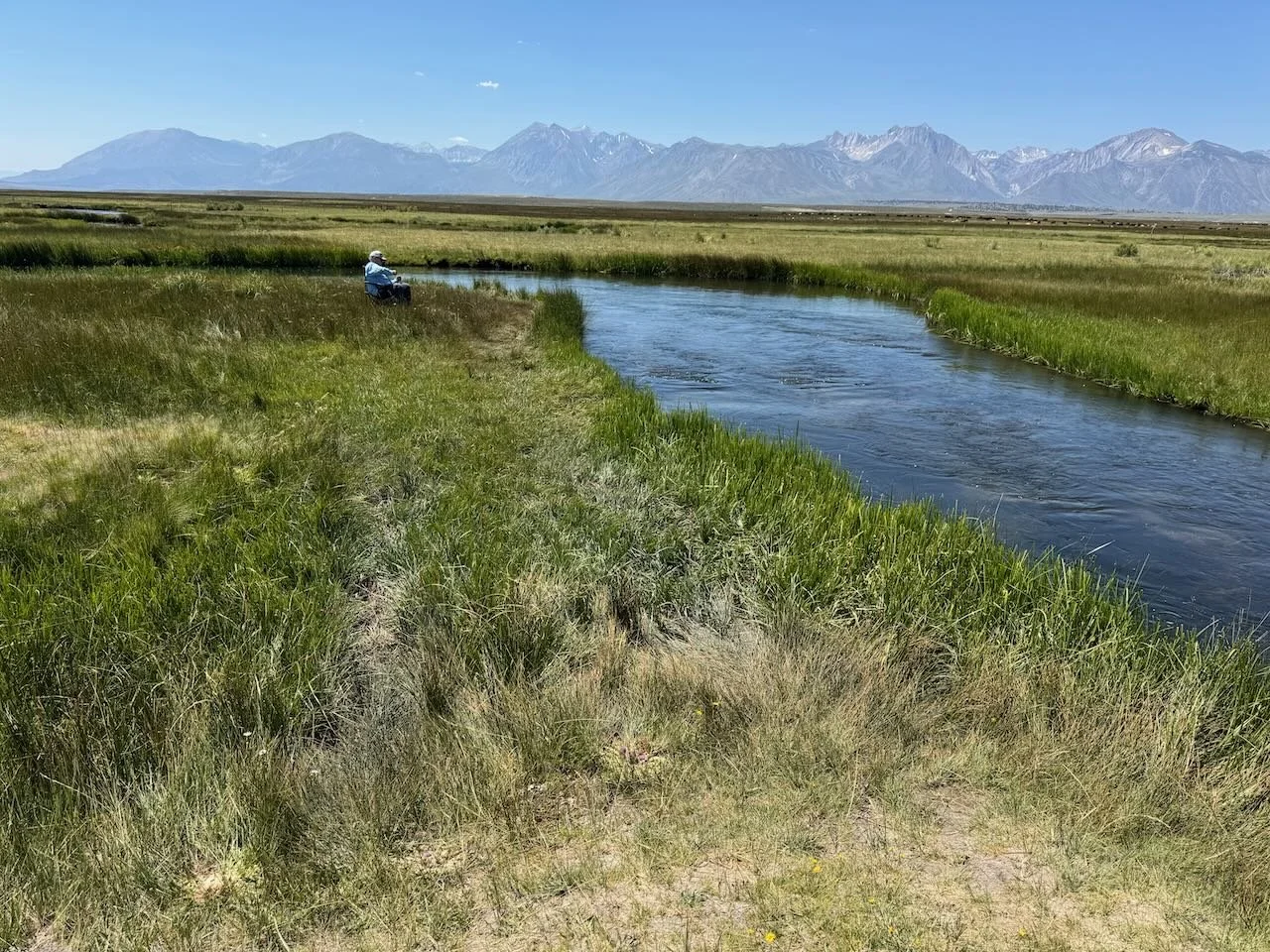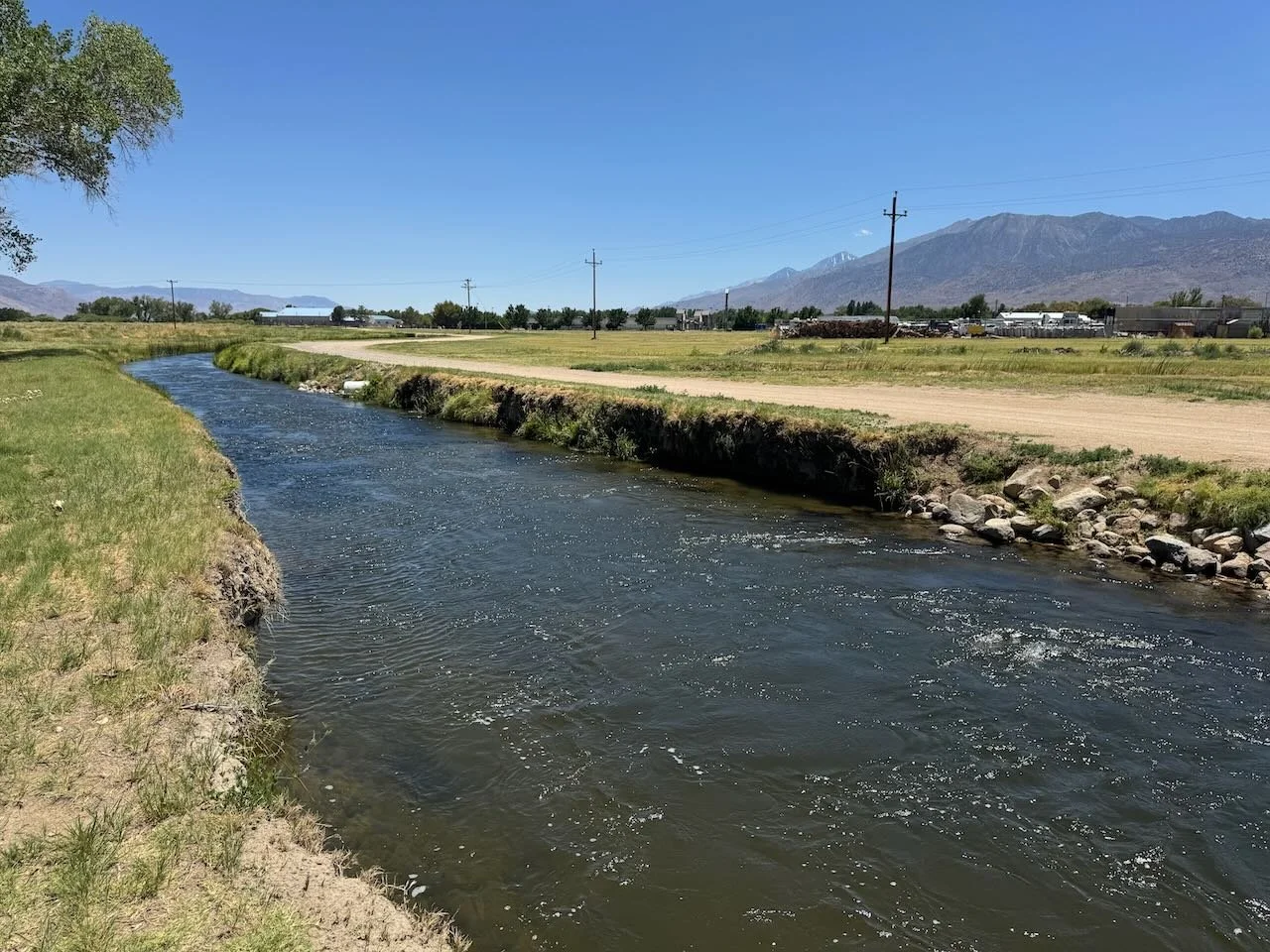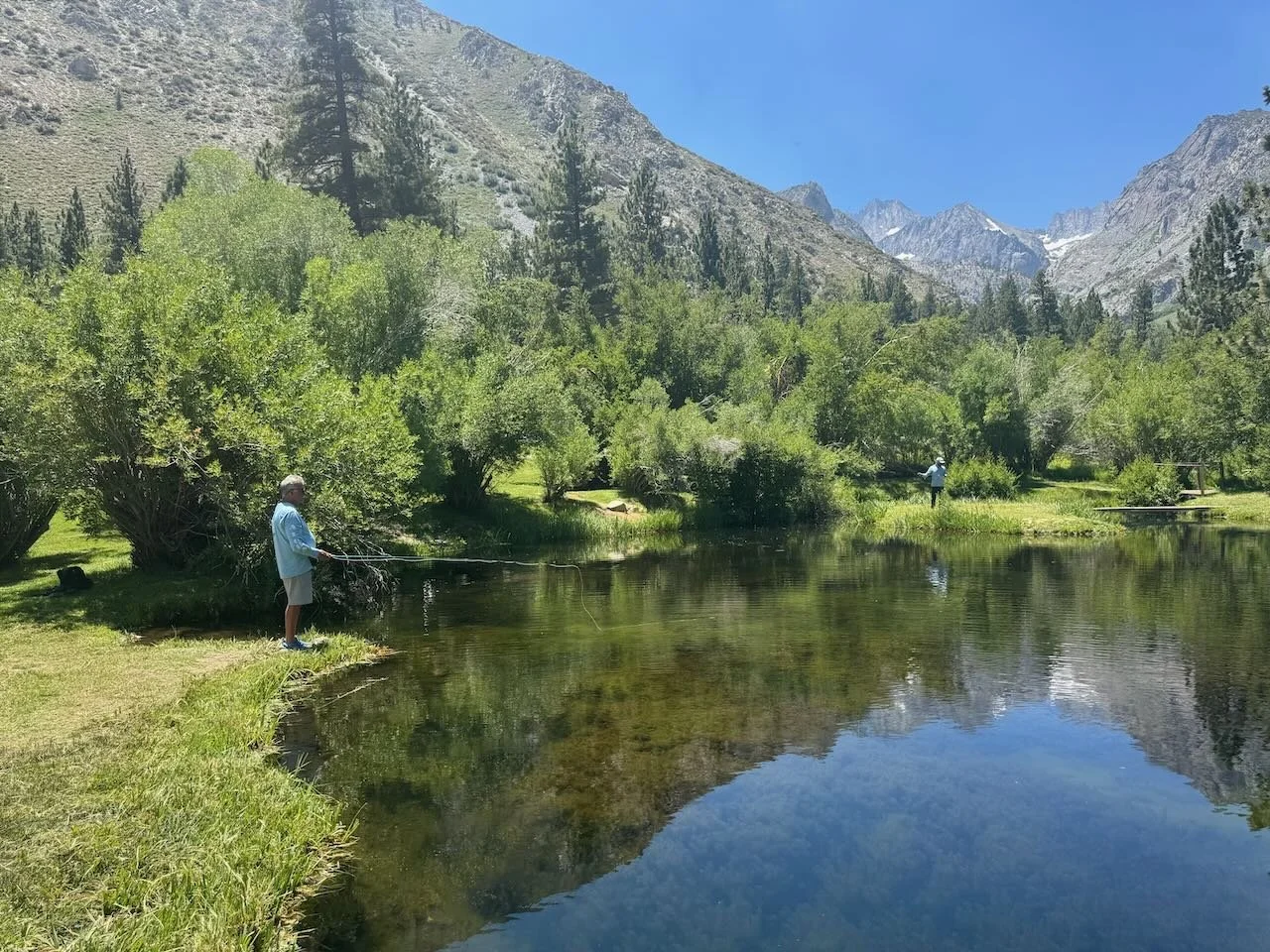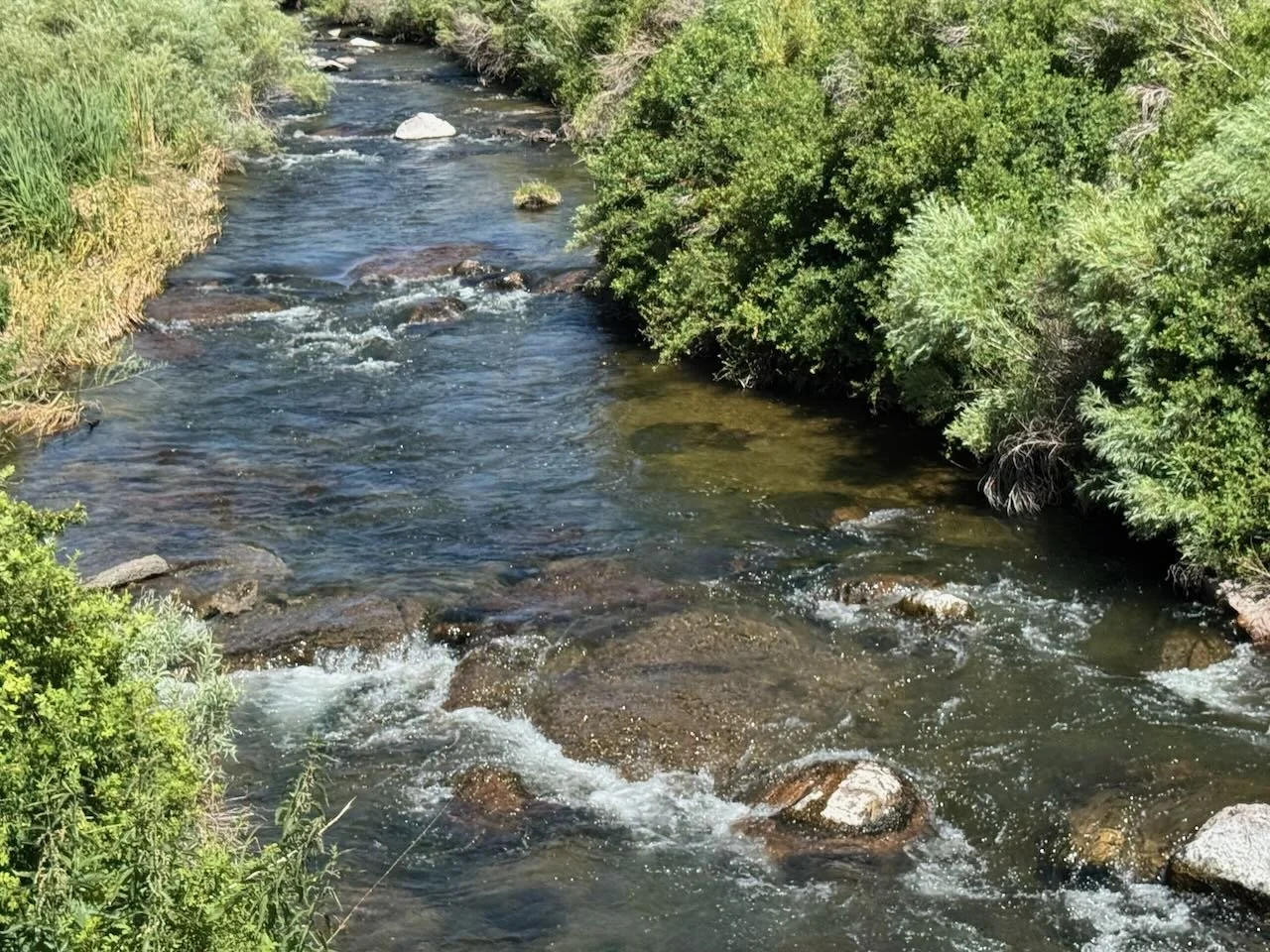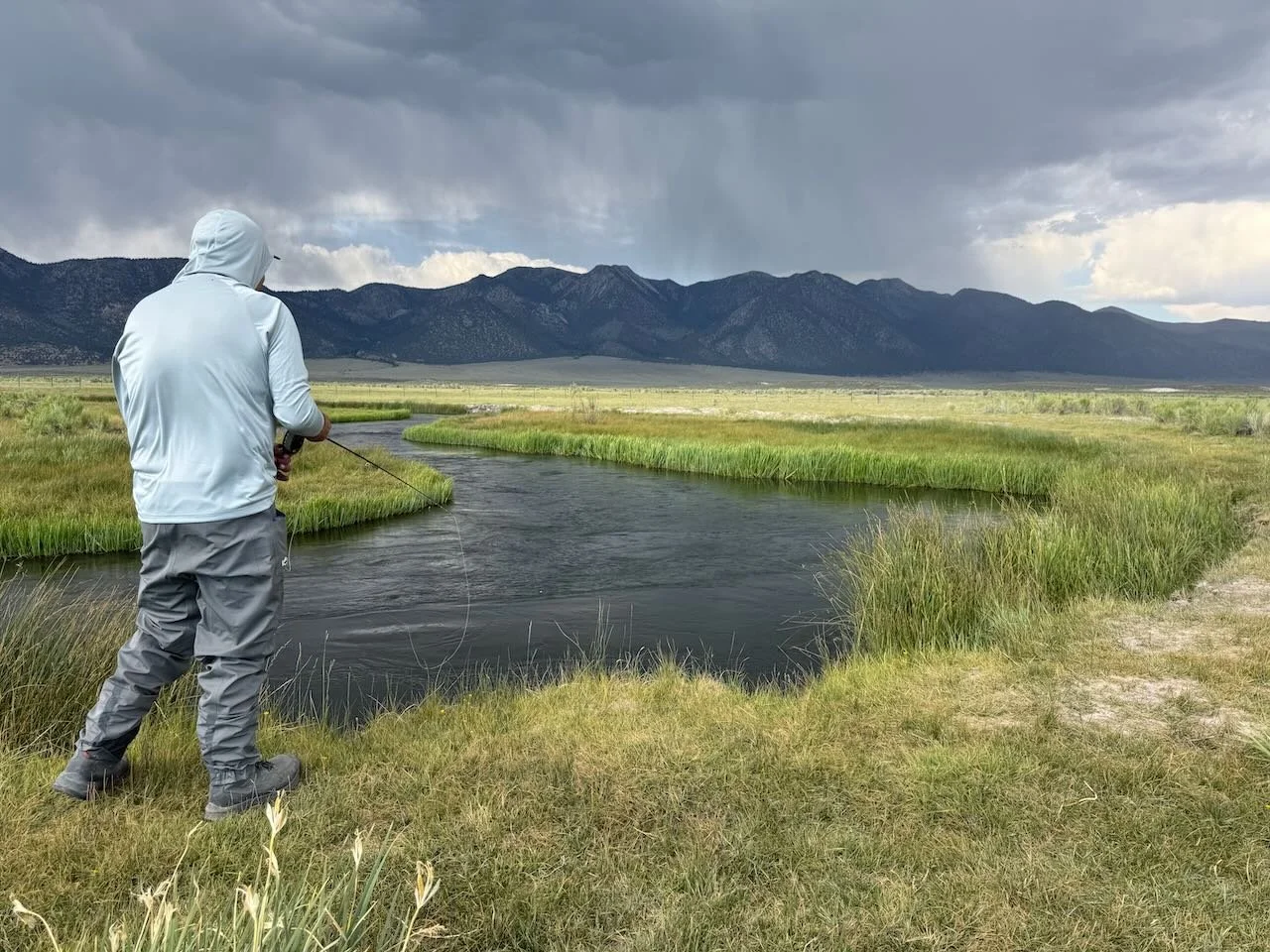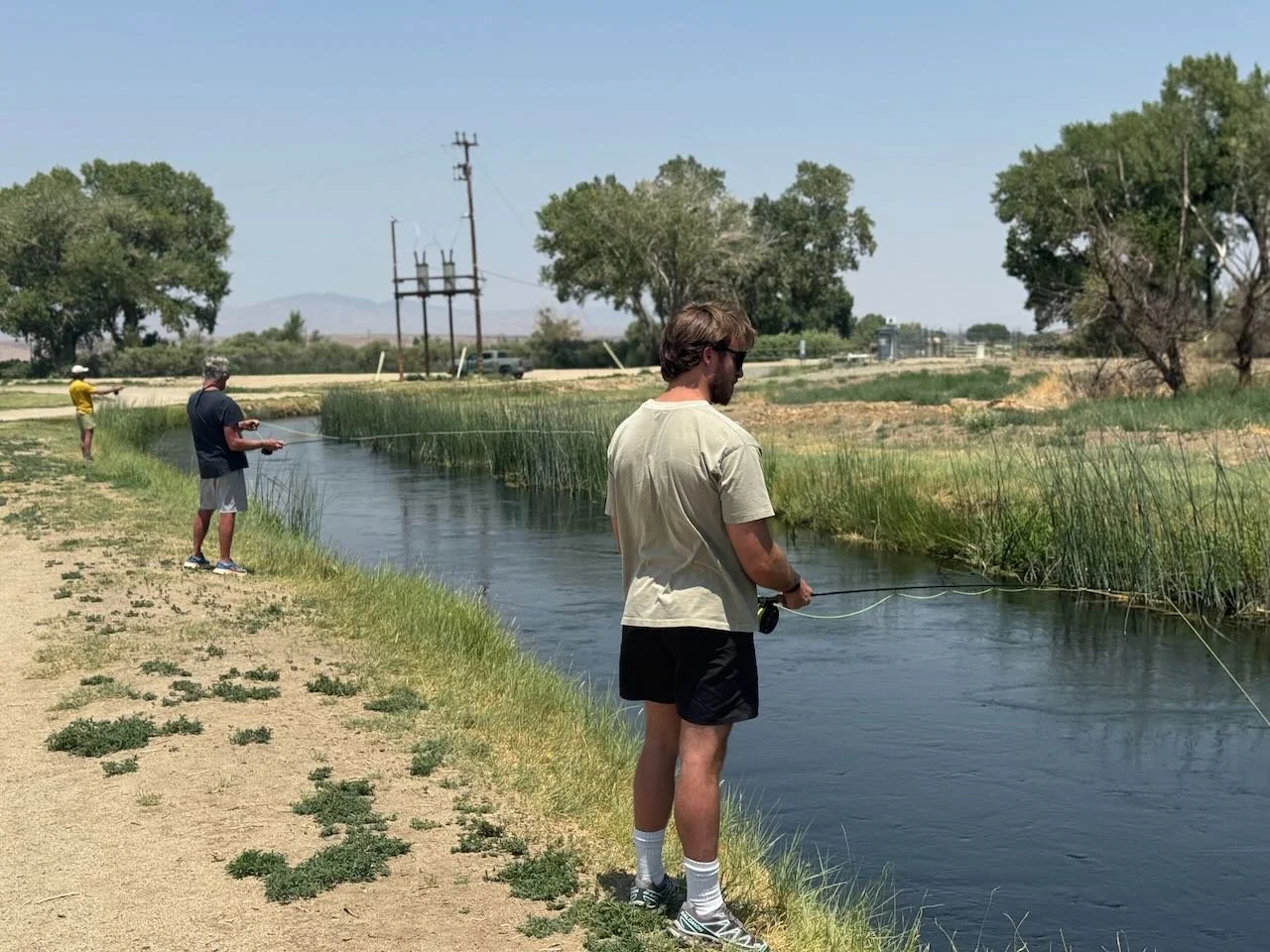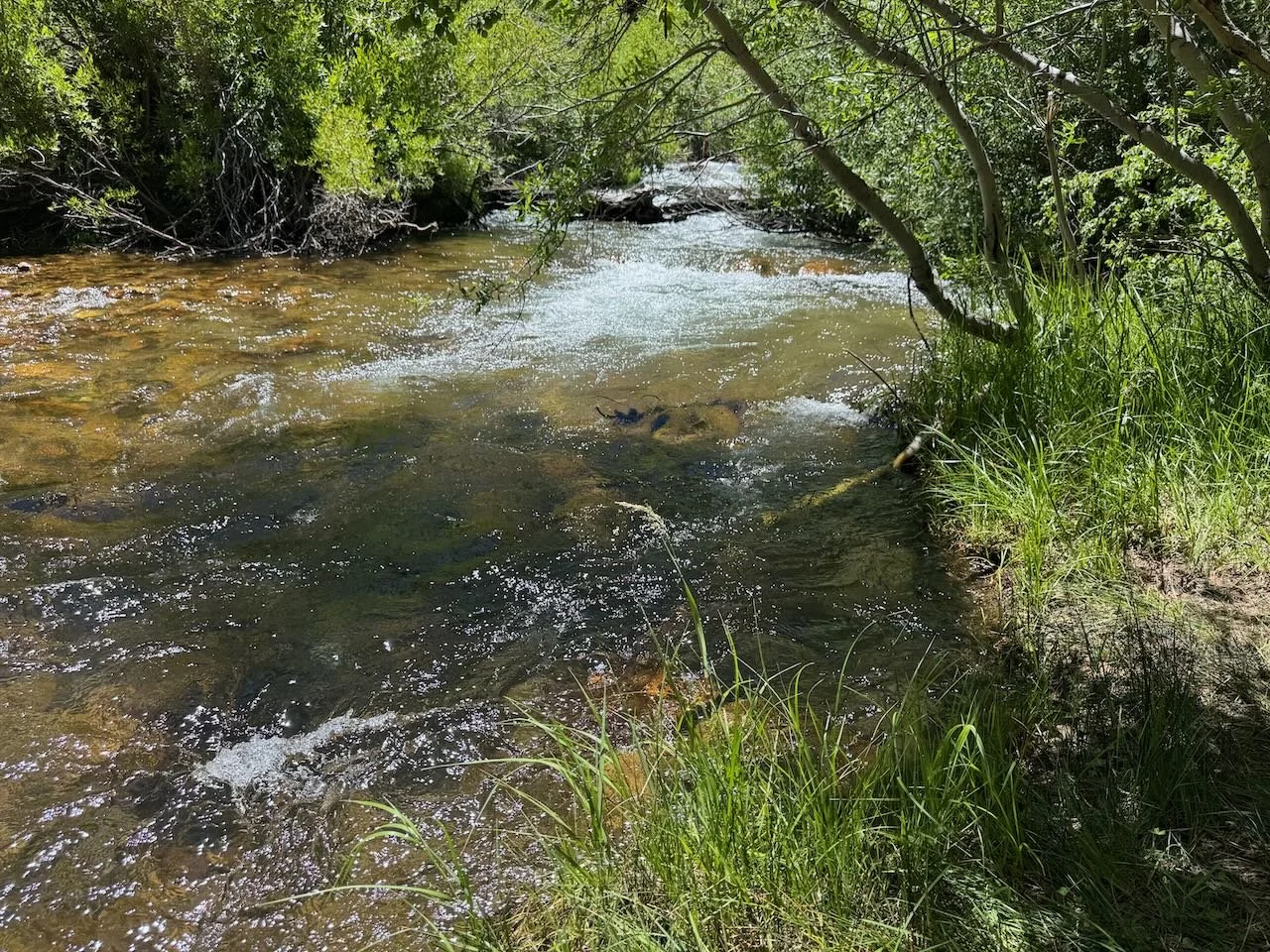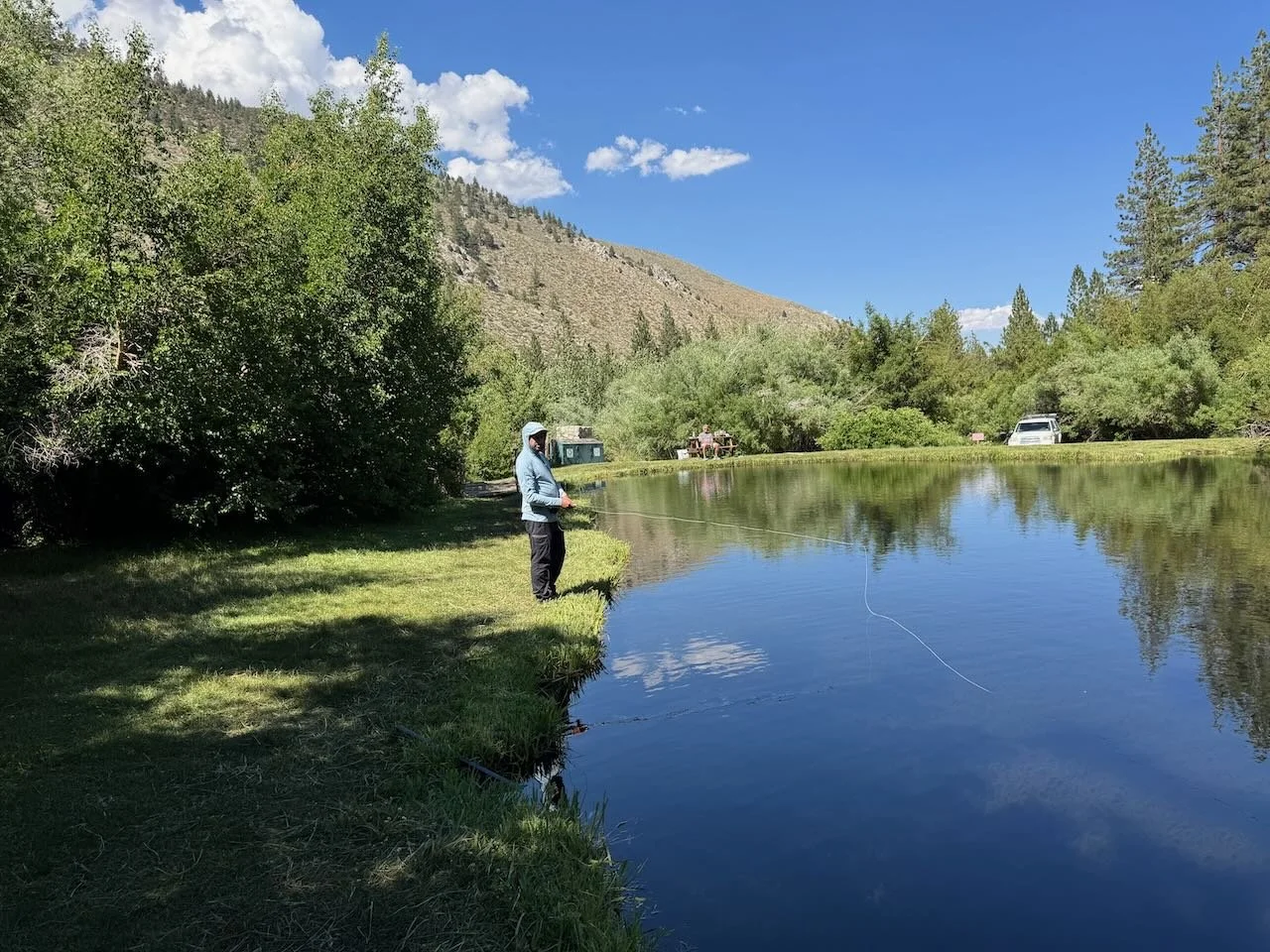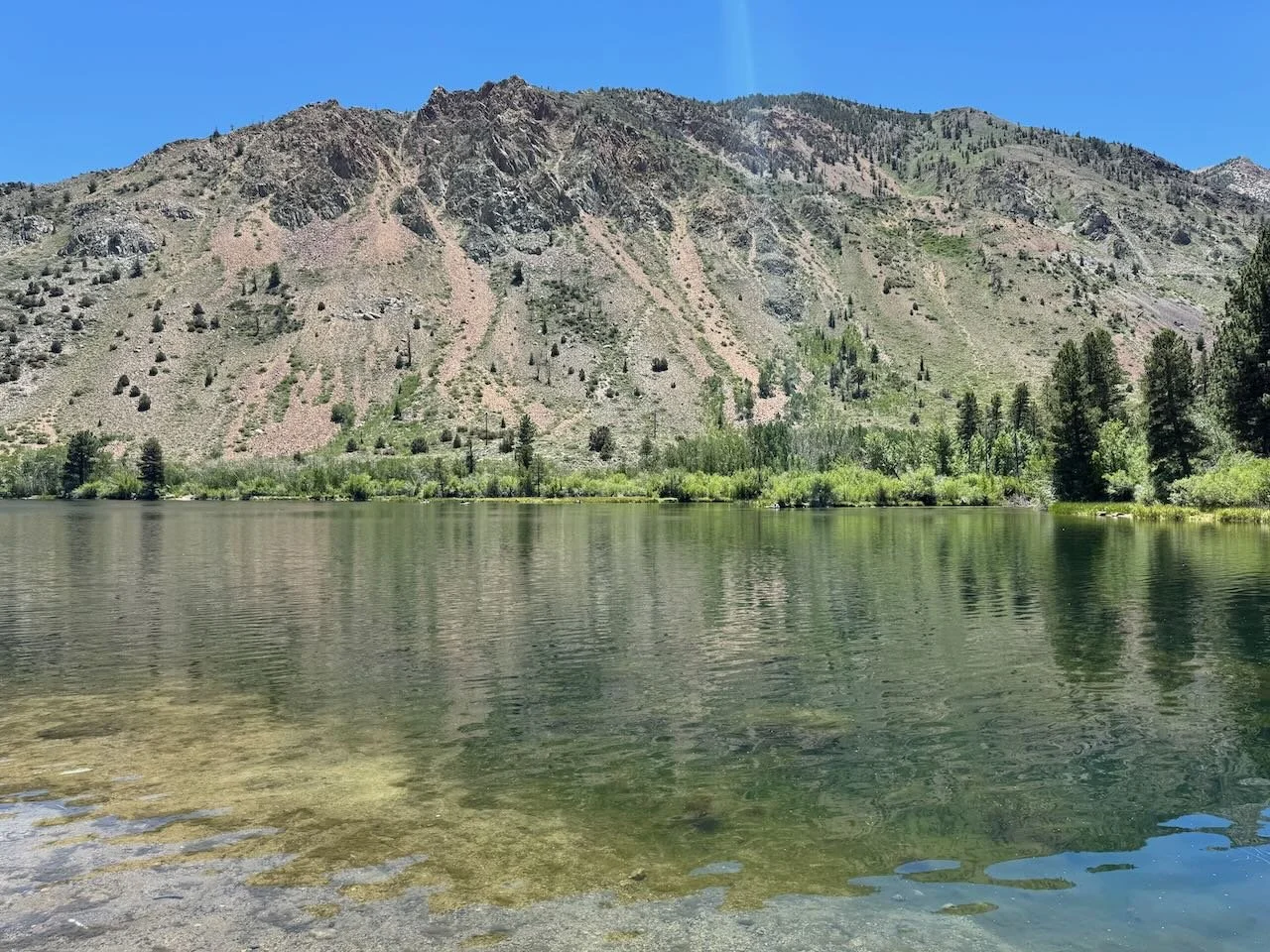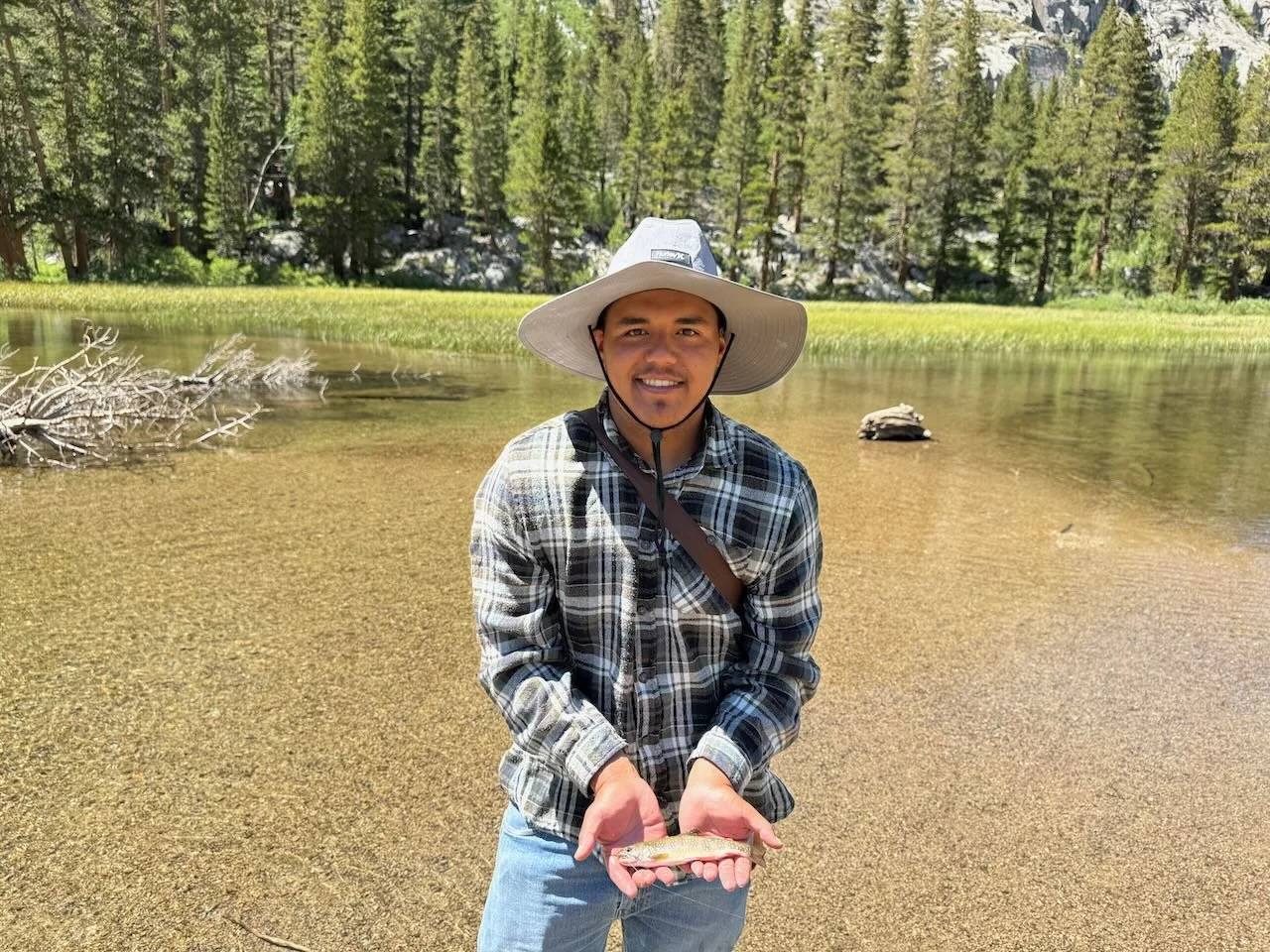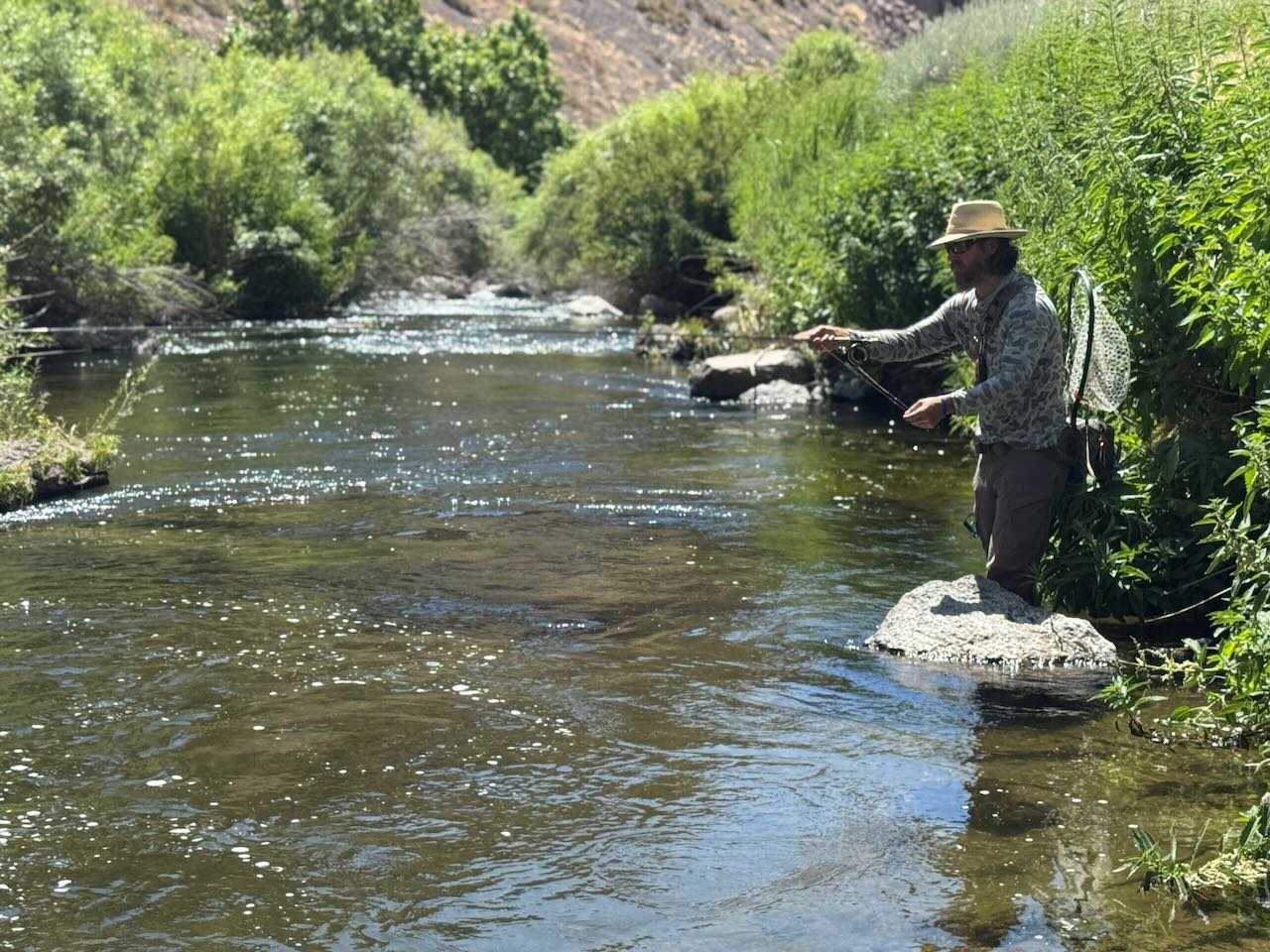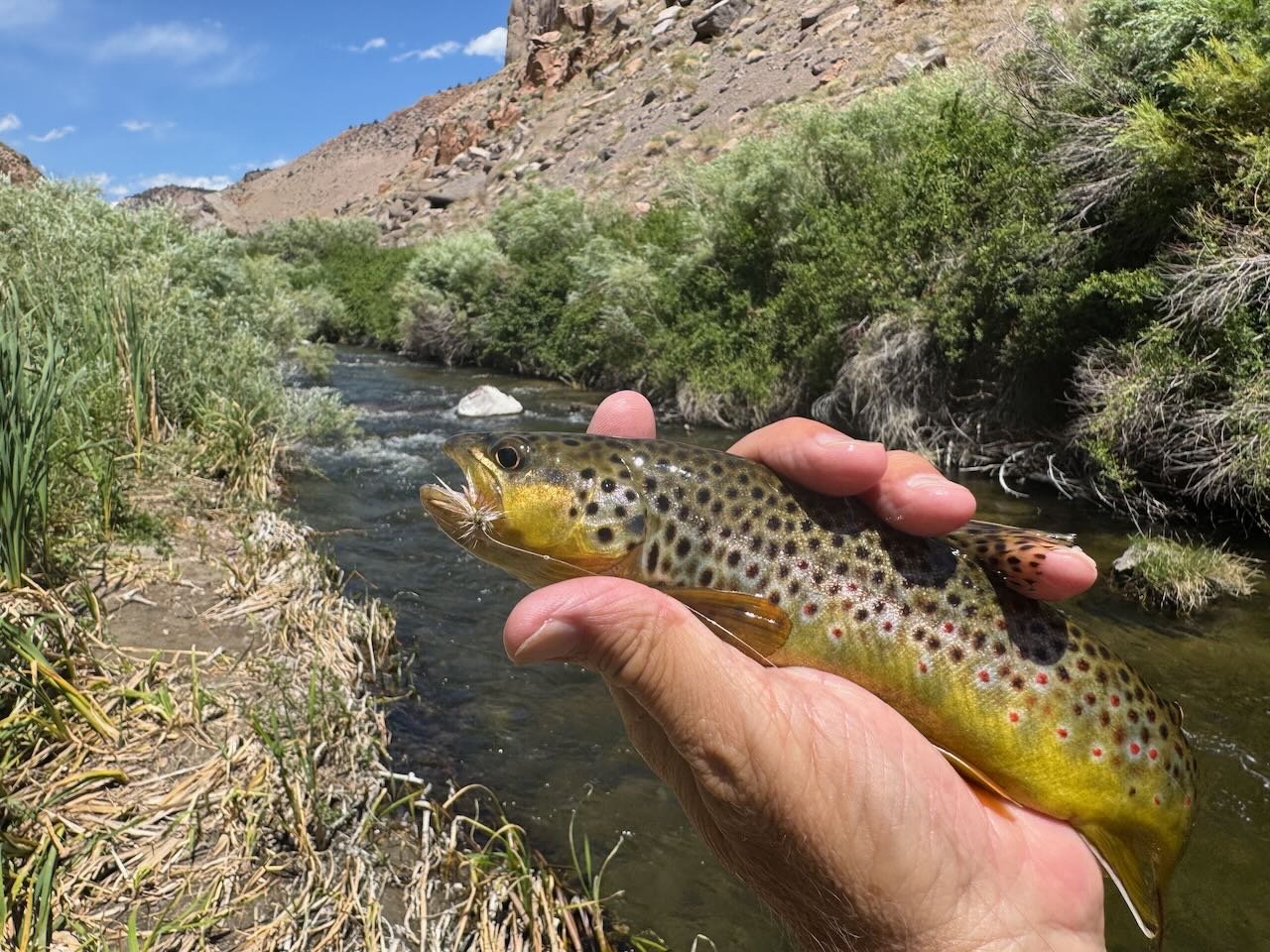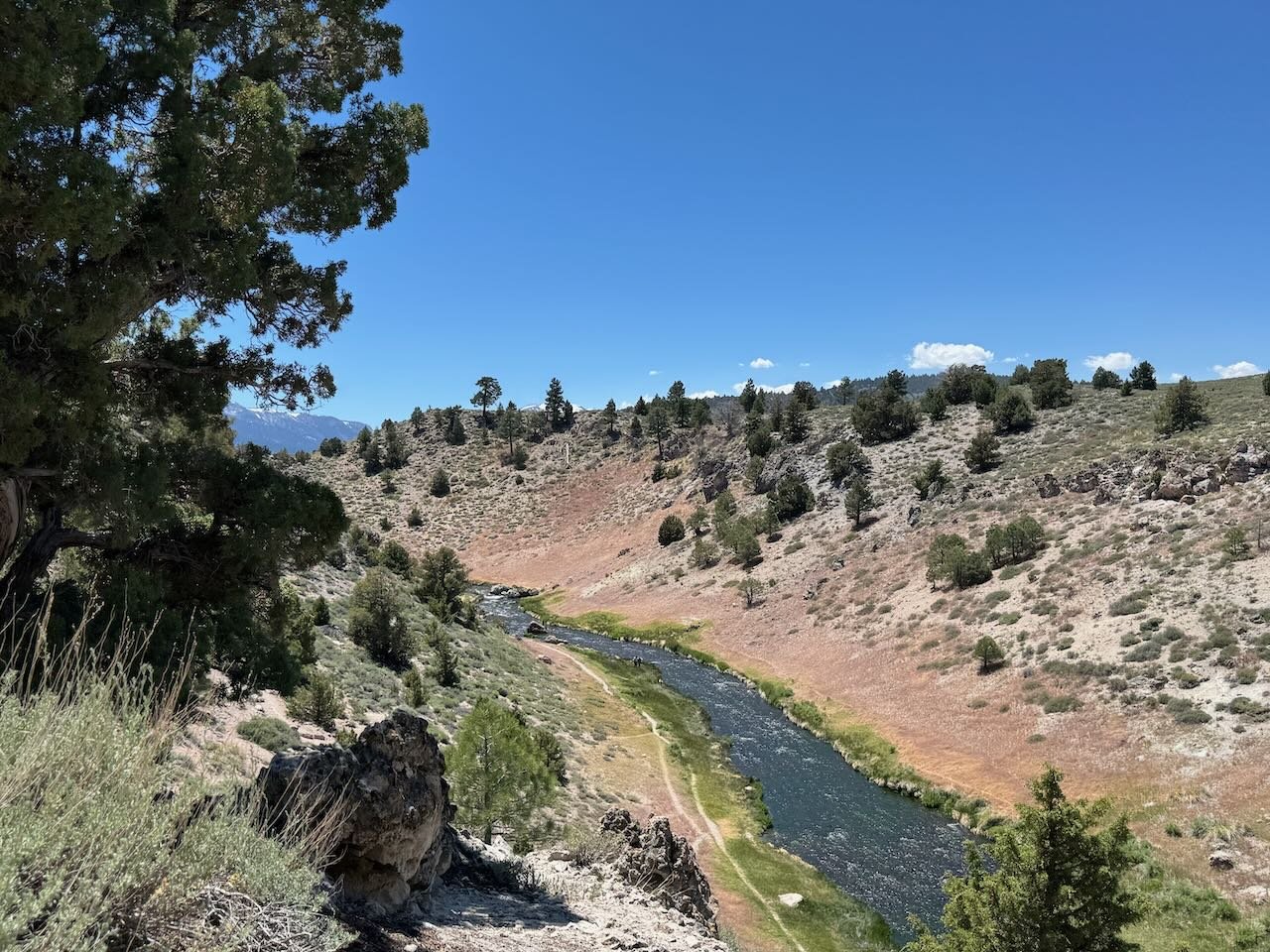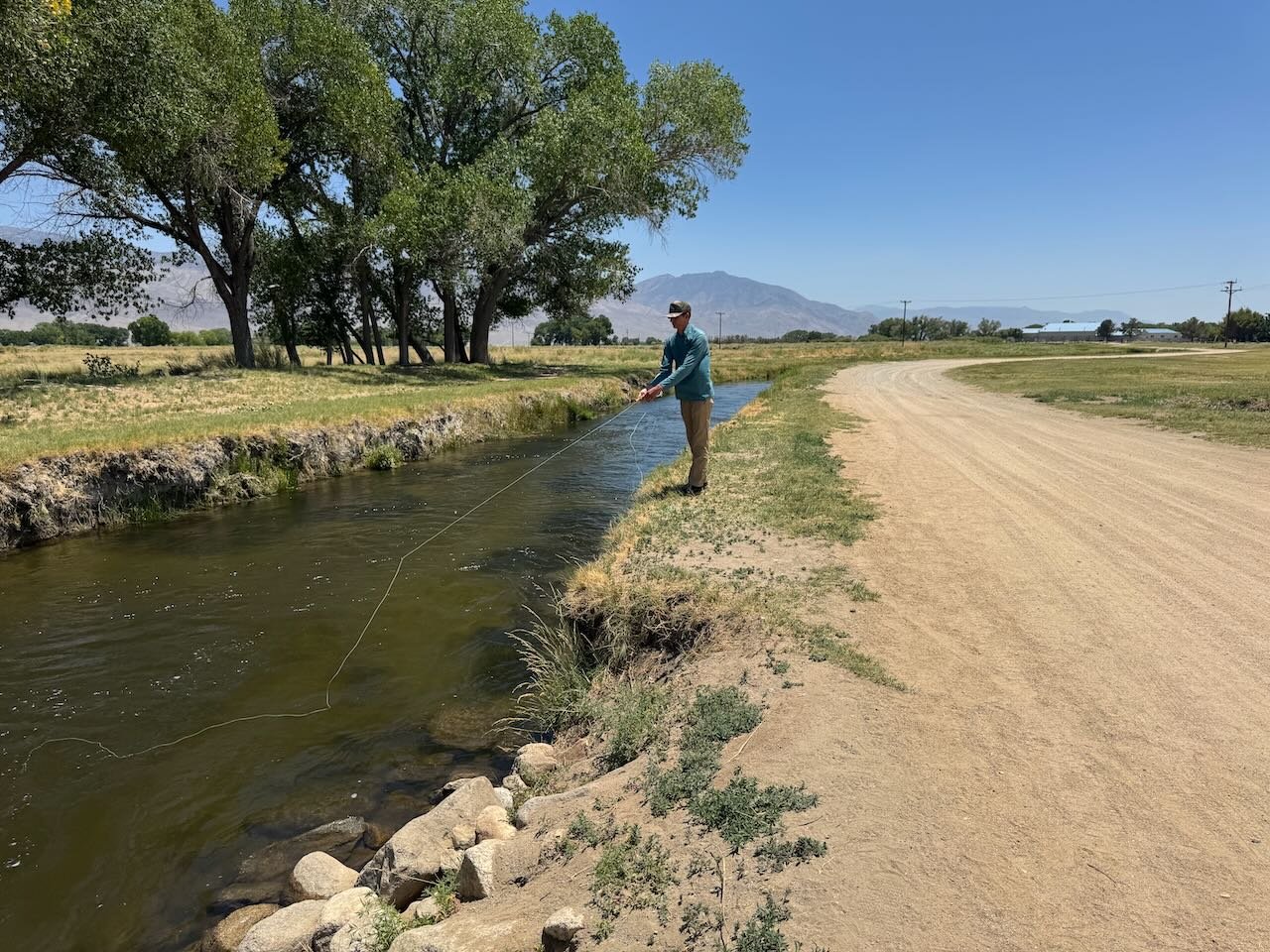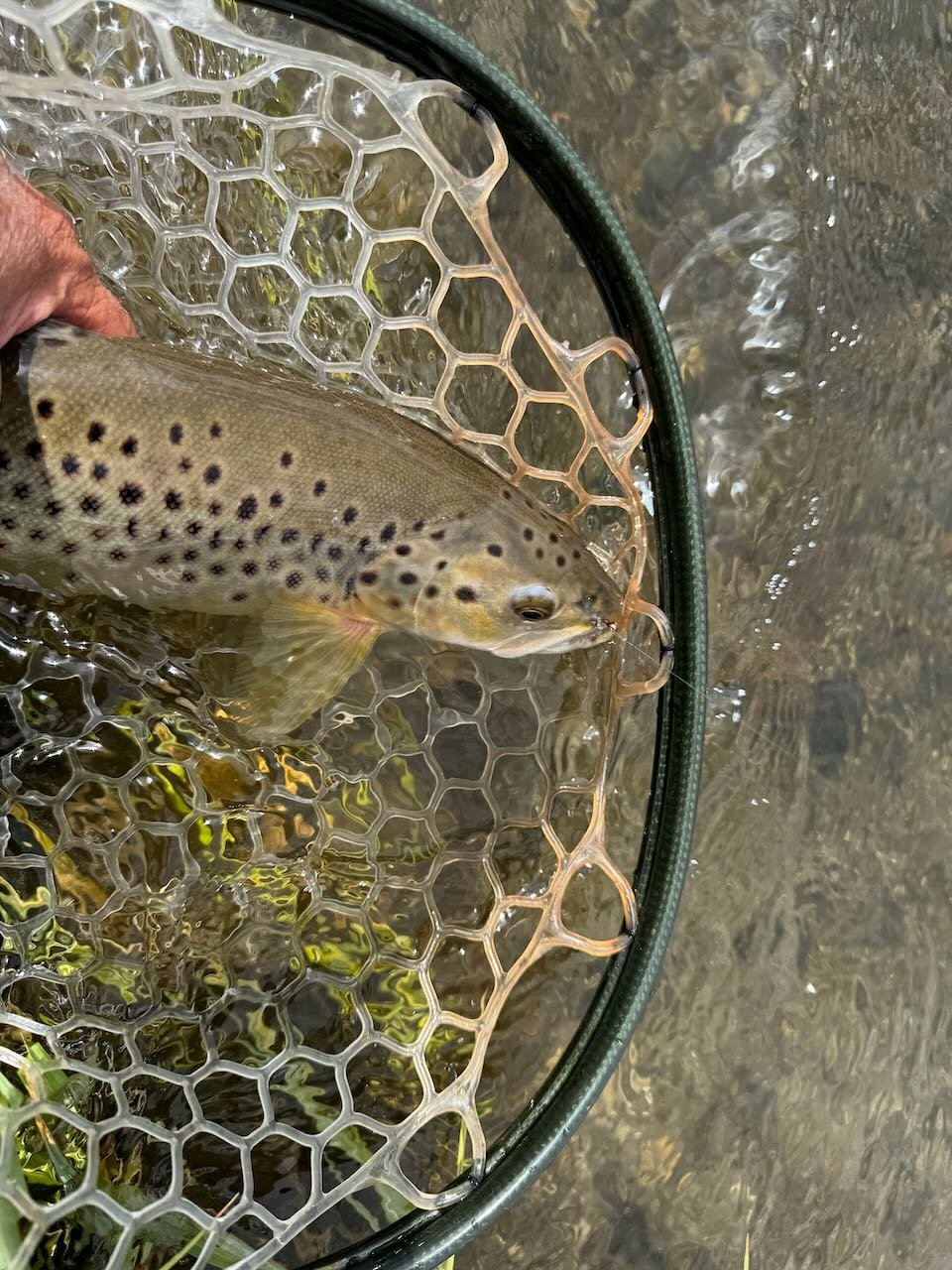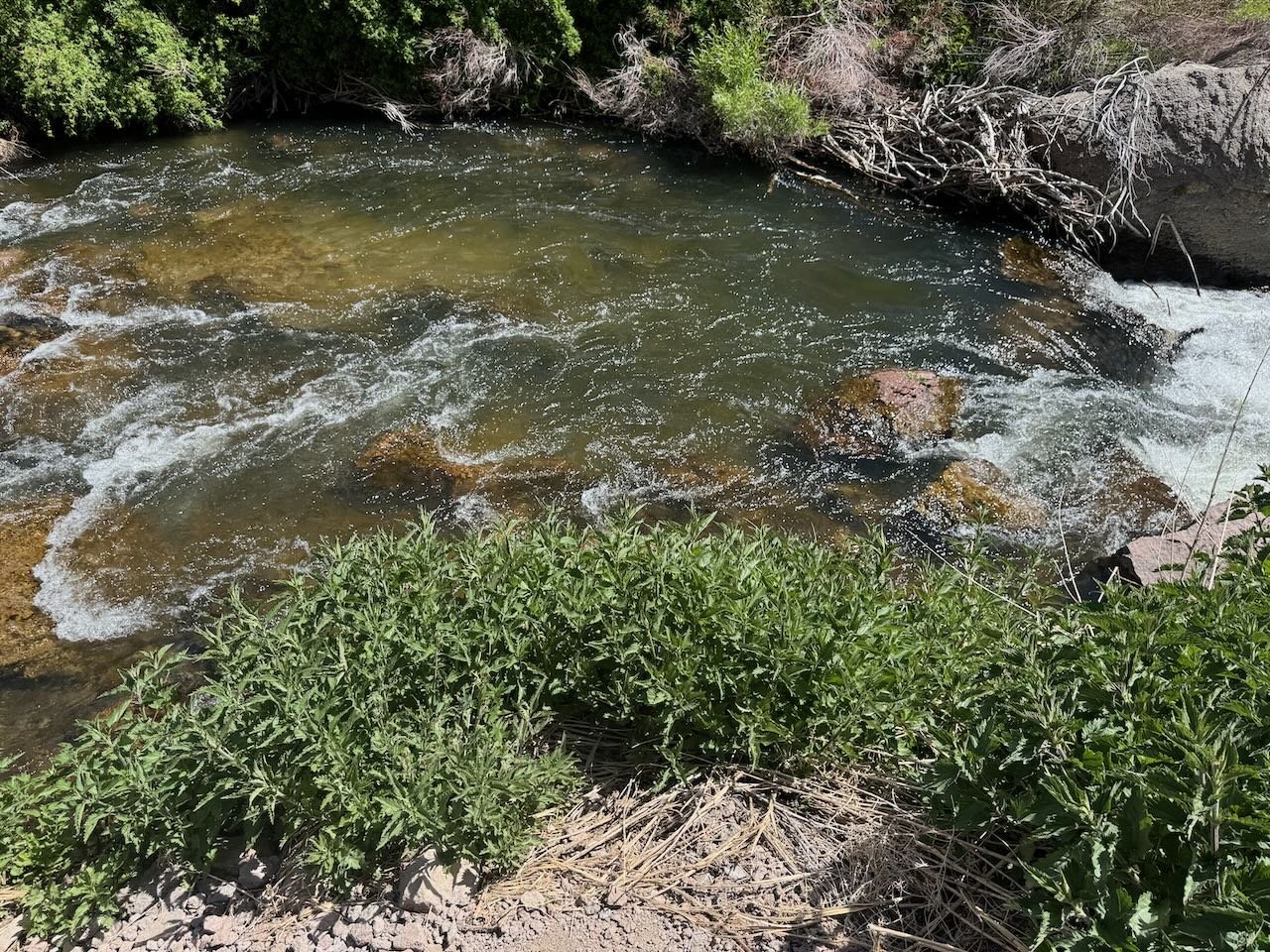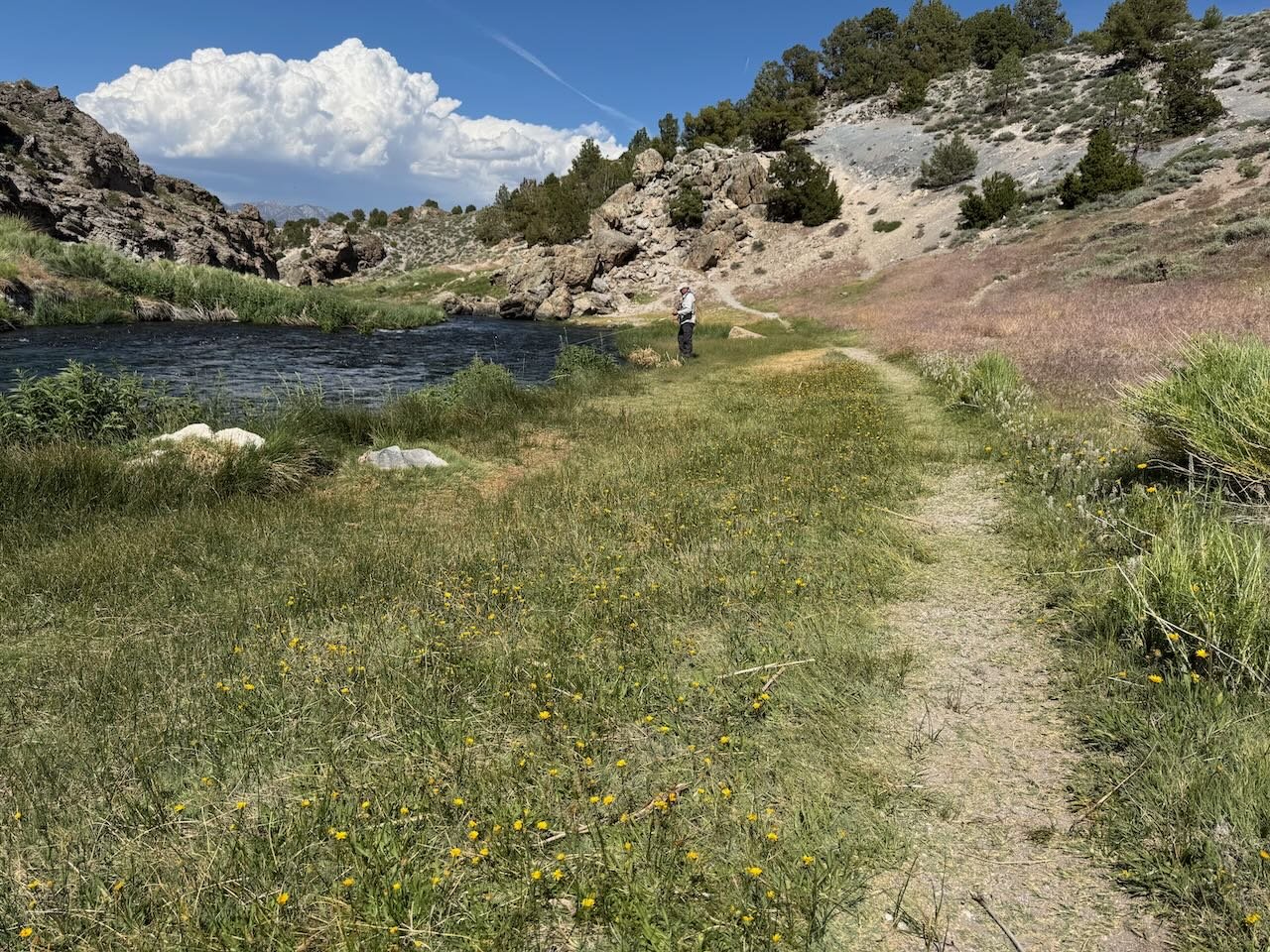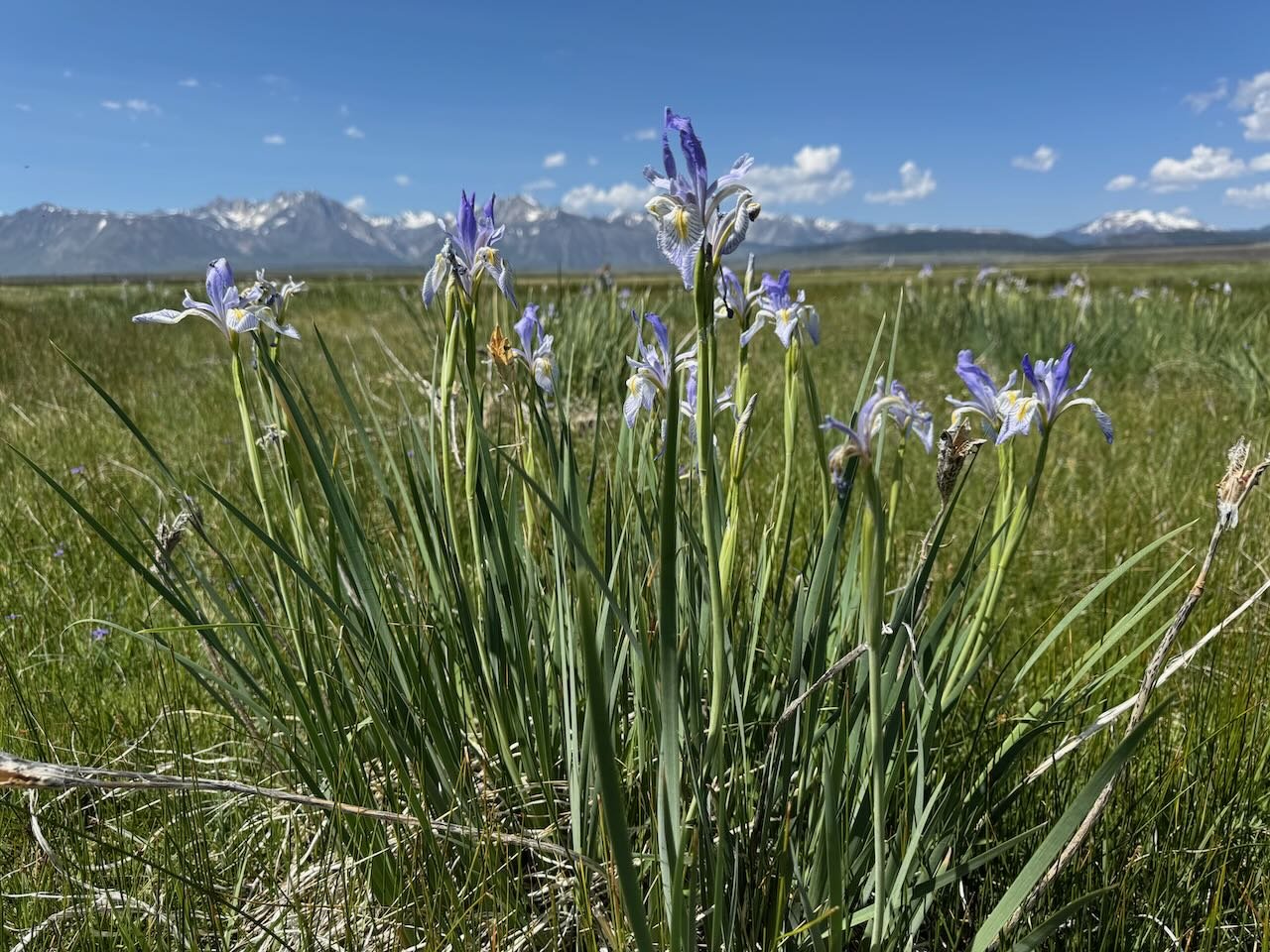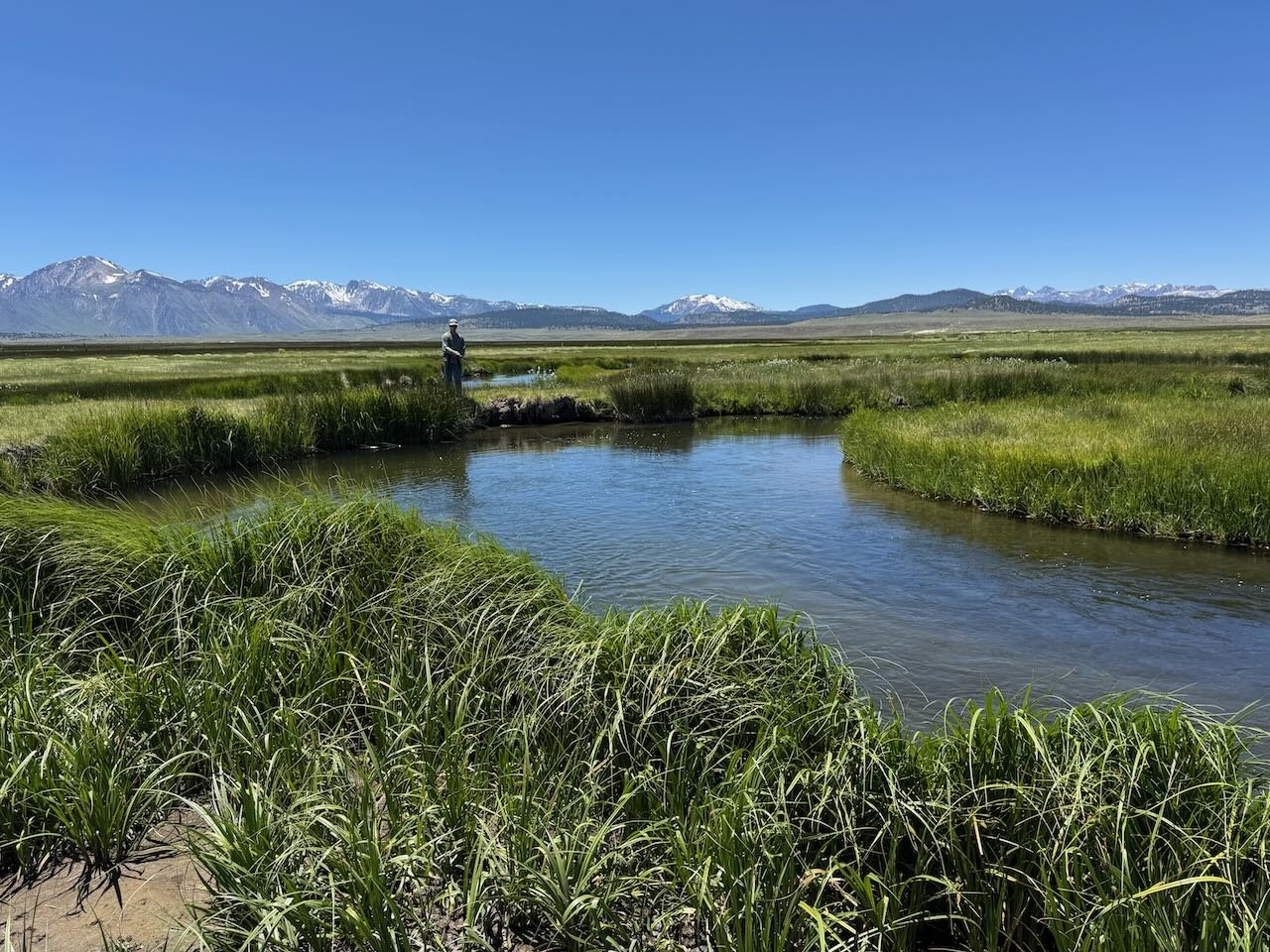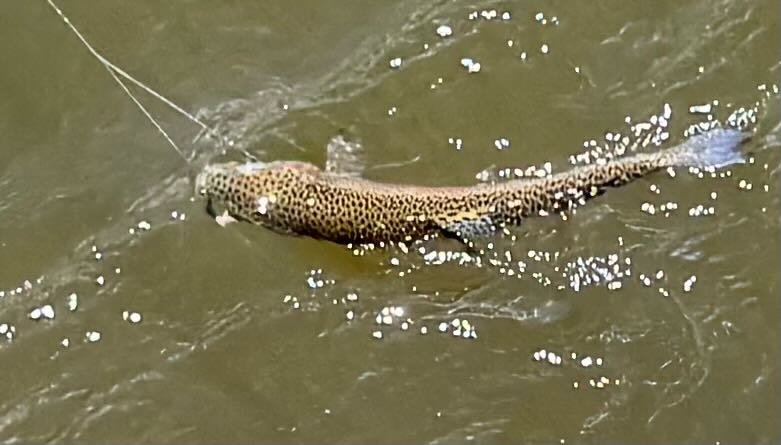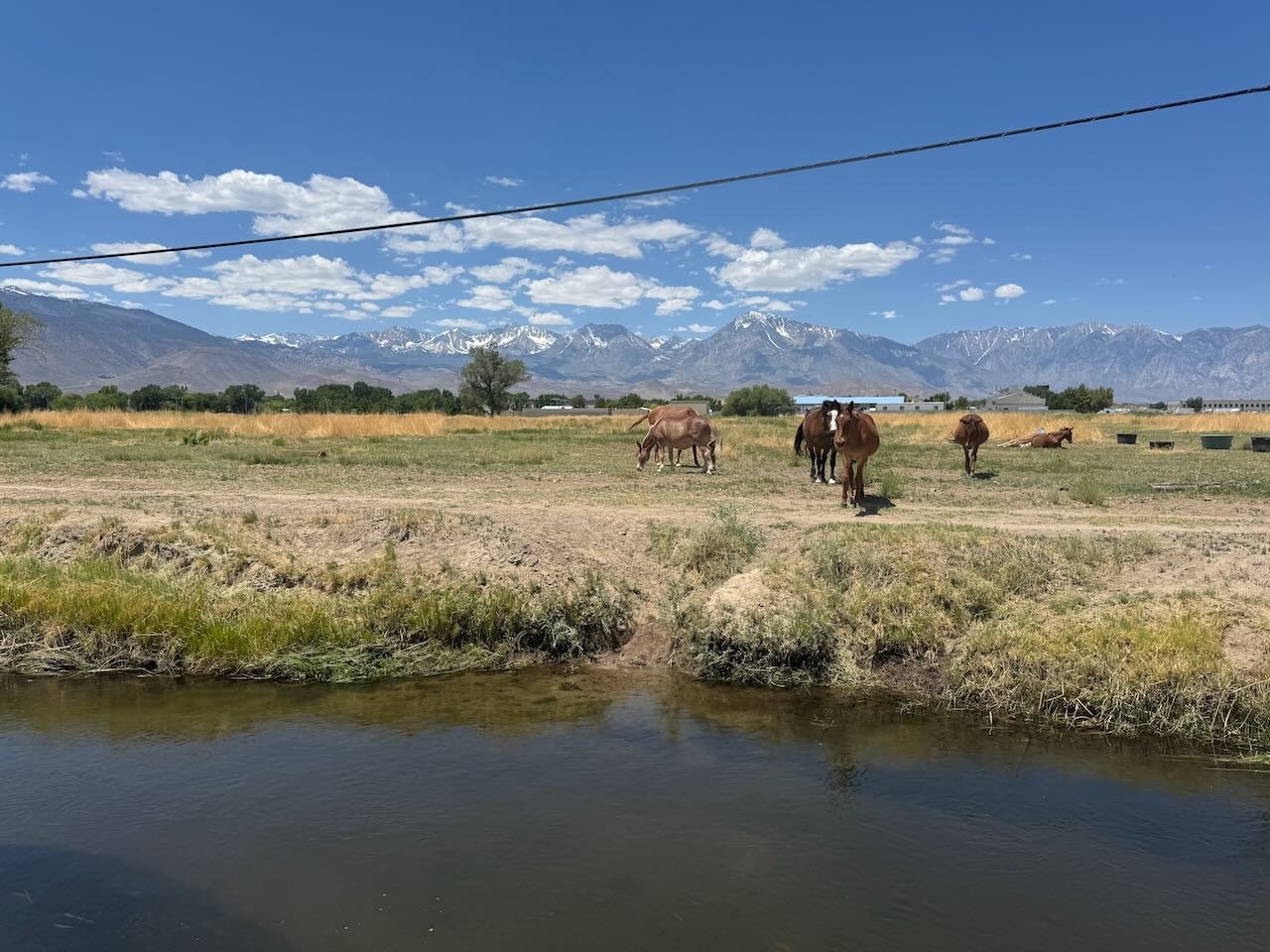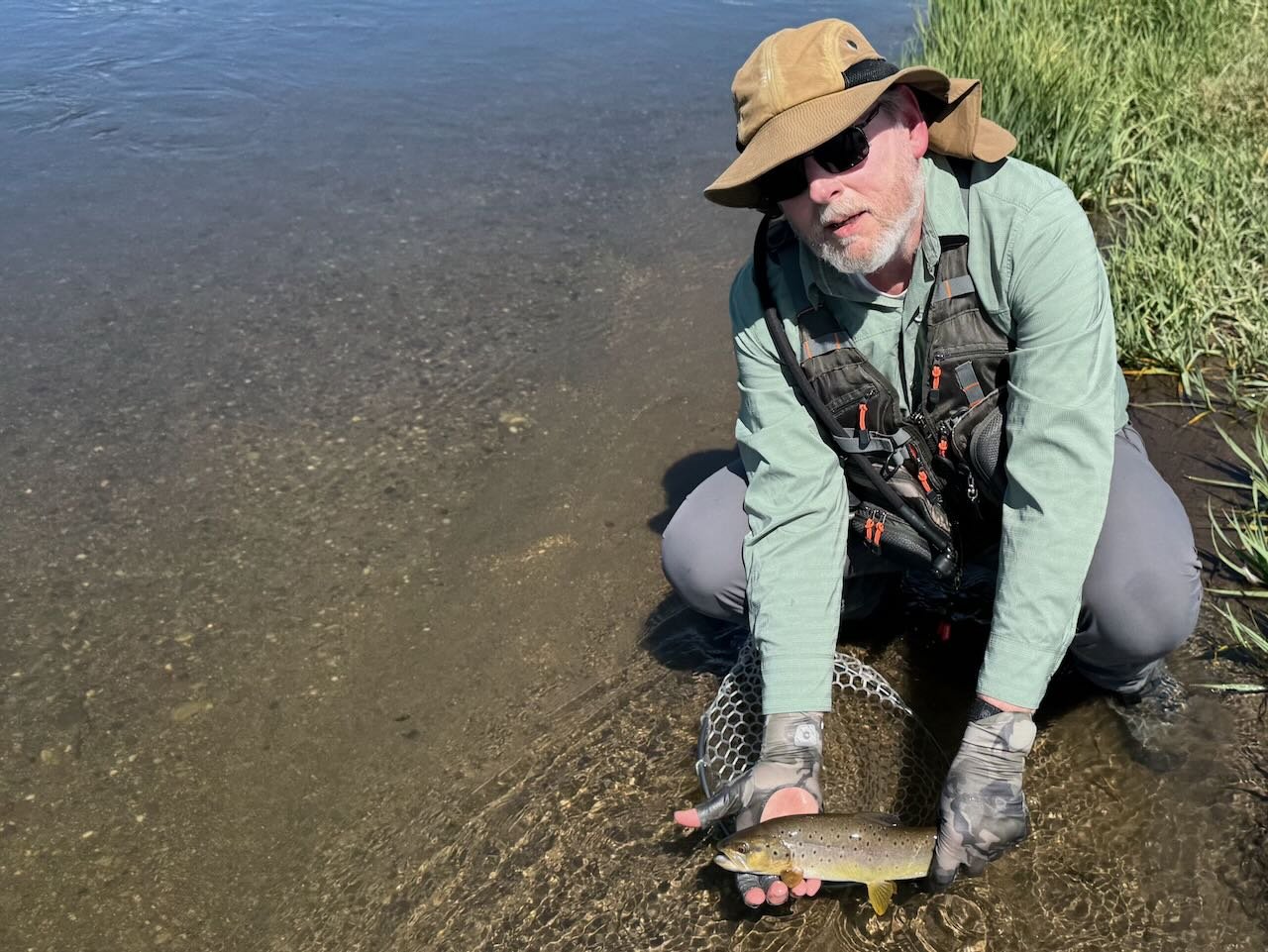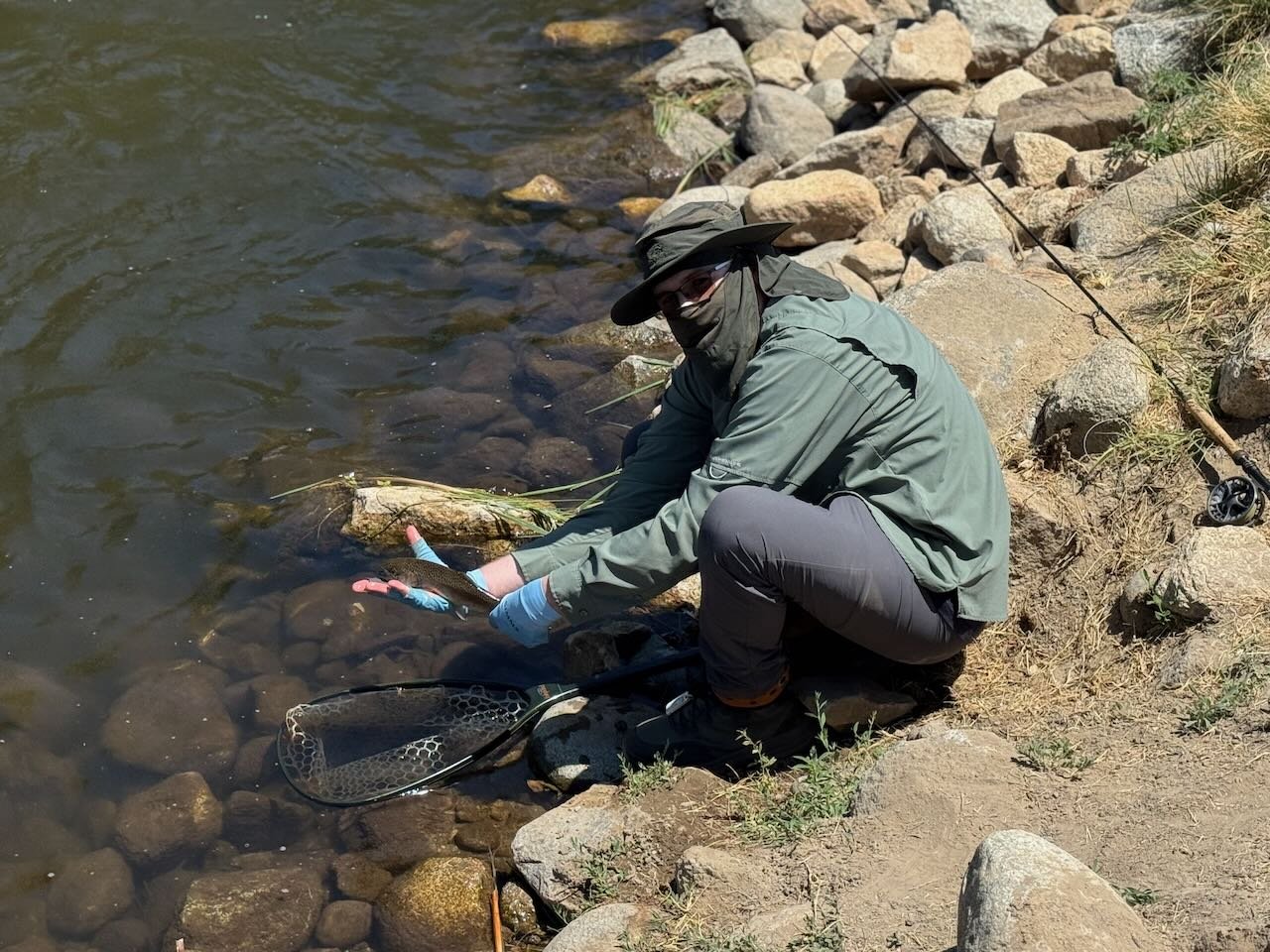The heat of summer is here and missing is grasshoppers. There are a few waters that are producing fish for fly fishers throwing grasshopper patterns in the late afternoon winds. Mayflies, caddis and midges are the insects that fly fishers should be imitating as these are the insects the trout are feeding on. While fly fishers are concentrating on the classic fly fishing waters don’t forget about the opportunities that exist on all of the freestone creeks that drain the canyons of the Eastern Sierra.
Freestone creeks are a perfect getaway from the heat of the Owens Valley and fishing with a stimulator and tiger midge produce wild brown and brook trout.
Hot Creek
Interpretive Site:
The morning hatch is from trico mayflies. Late the night before or at first light on the morning of, the male trico’s hatch. In the morning around 8:30 the female trico’s hatch and this is the hatch that fly fishers want to be on the water for. Be on the water by 8:30 rigged with a size 22 female trico dun parachute or size 22 sparkle trico dun. Cast your fly upstream of rising fish by two or three feet. A drag free drift on 6X tippet is what is needed to fool the finicky wild trout of Hot Creek. At some point in your morning fly fishing the trout will stop taking your parachute. It’s time to switch to a size 22 trico spinner pattern. The trico spinners are dead on the water and the trout know that. The trout can slurp up the dead spinners without them flying off. By late morning the hatch of trico’s is over and so it the dry fly fishing. If you want to keep fishing try using an ant, beetle or hopper pattern. It takes lots of drifts to get a fish to come to the surface for a terrestrial. Present your terrestrial patterns gently on the water as to not spook trout.
Julie Faber from Bishop enjoying the morning trico hatch on the Interpretive site of Hot Creek fishing with a trico spinner pattern.
Hot Creek
Canyon Section:
It’s interesting to observe the changes in fly fishing behavior of Hot Creek over the years. It the 1980’s and 1990’s few fly fishers fished the Interpretive Site of Hot Creek because it was too hard to get the fish to take dry flies. Now adays it’s the Hot Creek Canyon that fly fishers are avoiding because it’s too hard to fly fish in between the weed beds. Hot Creek is a technical spring creek that is rated as the easiest to fly fish hard water in the Eastern Sierra. This area requires pinpoint accurate casts to get short drifts in the tiny lanes between the weed beds. Drifting the dry fly that represents the stage of the insect the trout are feeding on is what will produce trout in the canyon. Start the morning early in the canyon with a size 22 female trico parachute and size 22 sparkle duns. Once the trout quit taking your female trico parachute switch to a size 22 trico spinner pattern. Once the hatch is over try nymphing the deeper holes, pockets and waters without weeds with size 22 olive quilldigons, size 20 pheasant tail nymphs, size 22 tiger and zebra midges. Hot Creek Canyon has a few hoppers flying around and fly fishing a hopper pattern in the afternoon wind will produce a few trout.
Nymphing in the mornings in the pockets and pools of the upper Owens River with pheasant tail nymphs and gold ribbed hare’s ears is producing eight to 18 inch wild browns and rainbow trout..
Upper Owens River
Above Benton Crossing Bridge:
Afternoon winds and hot temperatures is making it hard to fly fish the upper Owens River in the afternoons. Fly fishers need to be on the river early to take advantage of the trout feeding on nymphs in the pockets and deep holes. Nymphing with an indicator or Euro rod with size 16 bead head flash back gold ribbed hare’s ears, size 18 bead head flash back pheasant tail nymphs, size 18 olive quildigons and size 12 stoner nymphs are producing eight to 18 inch wild rainbows and browns. Mid-afternoon winds makes dry fly fishing tough. With few to no grasshoppers around fishing with size 16 elk hair caddis, size 18 Adams parachutes and size 16 stimulators is brining a few six to 12 inch trout to the surface. Throwing olive slumpbusters in size 10, olive wooly buggers in size 10 and size 10 Hornberg’s is producing a few fish in the morning for those fly fishers pulling streamers.
Afternoon clouds are cooling off the fly fisher making nymphing in the afternoons productive for wild brown trout and stocked rainbow trout.
Bishop Creek Canal
Behind Bishop Veterinary Hospital:
Afternoon clouds have been cooling off fly fishers and nymphing or drifting dry flies is producing a few wild brown trout and stocked rainbow trout. Fly fishers getting on the canal early are finding wild trout willing to take size 18 bead head flash back pheasant tail nymphs, size 16 bead head flash back gold ribbed hare’s ears, size 14 tan scuds with dark olive backs and size 18 zebra and tiger midges. On the surface use a size 16 Adams parachute, size 16 elk hair caddis and size 16 stimulator.
Walking the banks of Bishop Creek through the vegetation and seeing a pool that allows an overhead cast with a dry and dropper rig is the essence of fishing the creek.
Bishop Creek Canyon
Middle Fork of Bishop Creek:
Now is the perfect time to be fly fishing in Bishop Creel Canyon. Being able to bush whack along the trails of the creek looking for those spots to cast a fly to without getting tangled is a great way to fly fish free stone creeks. Pocket water and pools are where the wild brown and brook trout are hanging out looking for a meal to float by. The stream does not produce enough calories for the trout so they are constantly looking up on the surface for a meal. This is the perfect situation to fish a dry and dropper rig. For dry flies fish your favorite dry fly as you will fish it with more confidence. For confidence dry flies try fishing with size 16 stimulators, size 16 Adams parachutes, size 16 elk hair caddis and size 16 Royal Wulff’s. For the nymphs fish with size 18 zebra and tiger midges, size 16 bead head flash back pheasant tail nymphs, size 16 bead head flash back gold ribbed hare’s ears and size 16 Prince nymphs. For the dry and dropper rig fish the nymph on a tippet of 5X fluorocarbon equal to 1.5 to 2 times the average depth of water tied to the bend of the dry fly. Four feet is the maximum length tippet to fish the dropper with as it tangles up too easy if it’s long. Fishing on Bishop Creek in the afternoon is a great way to beat the heat in the Owens Valley.


